Doctors in Performance: Abstracts 4 September 2025
Get to know the presenters and their subjects in the Doctors in Performance 2025
Emil Gryesten
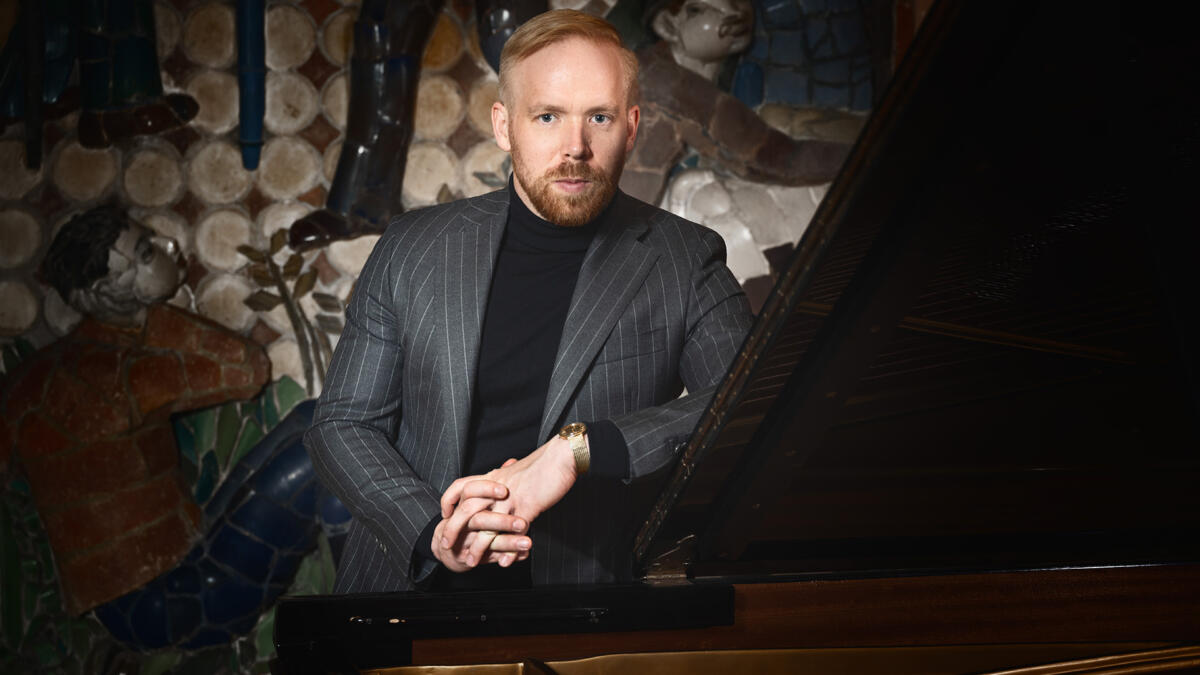
Somathemes and the Hammerklavier Sonata
This lecture-recital explores the interplay of gesture, imagination, and corporeality in musical interpretation through Roland Barthes’ concept of ‘somathemes’, introduced in his 1975 essay “Rasch”. In this text, Barthes argues that music operates on two simultaneous levels: the structural-symbolic (the codified elements of pitch, rhythm, and form) and the corporeal-affective, where musical meaning is shaped by the gestural forces of the body in performance. His notion of somathemes refers to bodily gestures embedded within musical figures, revealing the physical and affective dimensions of sound production. Expanding on Barthes’ ideas, Paulo de Assis emphasizes desire, sensuousness, and the corporeal in performance, framing interpretation as an intensely physical and affective process where the pianist’s gestures and impulses shape the sonic outcome.
Focusing on Beethoven’s Hammerklavier Sonata, Op. 106, this presentation examines how the physical demands of the work – its extreme leaps, dense counterpoint, and relentless rhythmic drive – generate somatic tensions that structure interpretation itself. By rethinking performance through somatic embodiment rather than purely analytical cognition, it demonstrates how musical expression emerges at the intersection of the score, the pianist’s body, and the instrument’s resistance.
Through three performance excerpts, the lecture-recital will:
- Illustrate the role of somathemes in shaping interpretative choices, particularly in opening movement and in the fugue.
- Apply experimental methodologies from the ongoing project A Thousand Hammerklavier Sonatas, using repetition and transformation as tools for uncovering hidden gestural structures – excerpt of the adagio.
- Bridge theory and performance, proposing that Barthes’ semiology and de Assis’ experimental performance philosophy can offer new ways of engaging with musical materiality.
This presentation is part of Gryesten’s doctoral research project Metaphor and the Erotics of Interpretation within the docARTES program at the Orpheus Institute, which investigates the role of metaphor, embodiment, and experimental performance methodologies in creating novel performances of canonical works.
Biography
Pianist and researcher Emil Gryesten Jensen is a PhD student at the Orpheus Institute and Assistant Professor at the Royal Danish Academy of Music, Copenhagen. A graduate of the Sibelius Academy, he has a strong connection to Finland, having won 1st Prize at the Ilmari Hannikainen Piano Competition (2010) and the Helmi Vesa Competition (2005). He also won the Nordic Piano Competition (2010) and made his Carnegie Hall debut in 2018. Gryesten has released eight critically acclaimed CDs, featuring an eclectic repertoire from Beethoven and Schubert to contemporary Nordic composers, and performs internationally as a soloist and chamber musician.
Ettore Biagi and Livia Schweizer
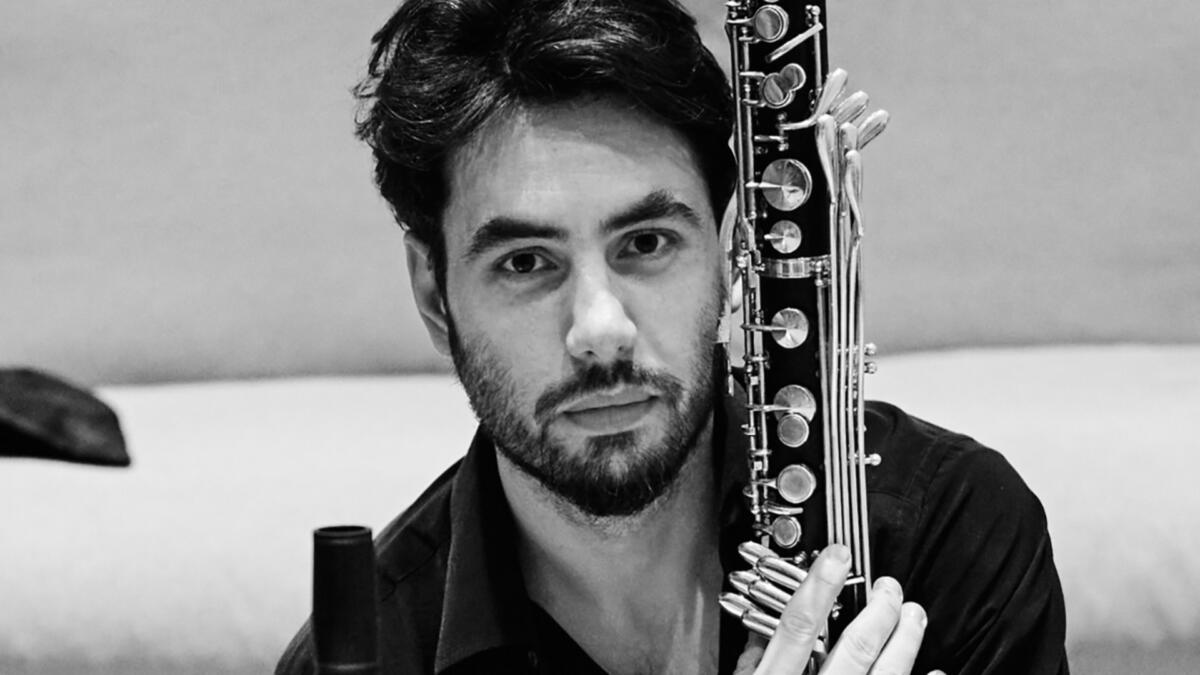
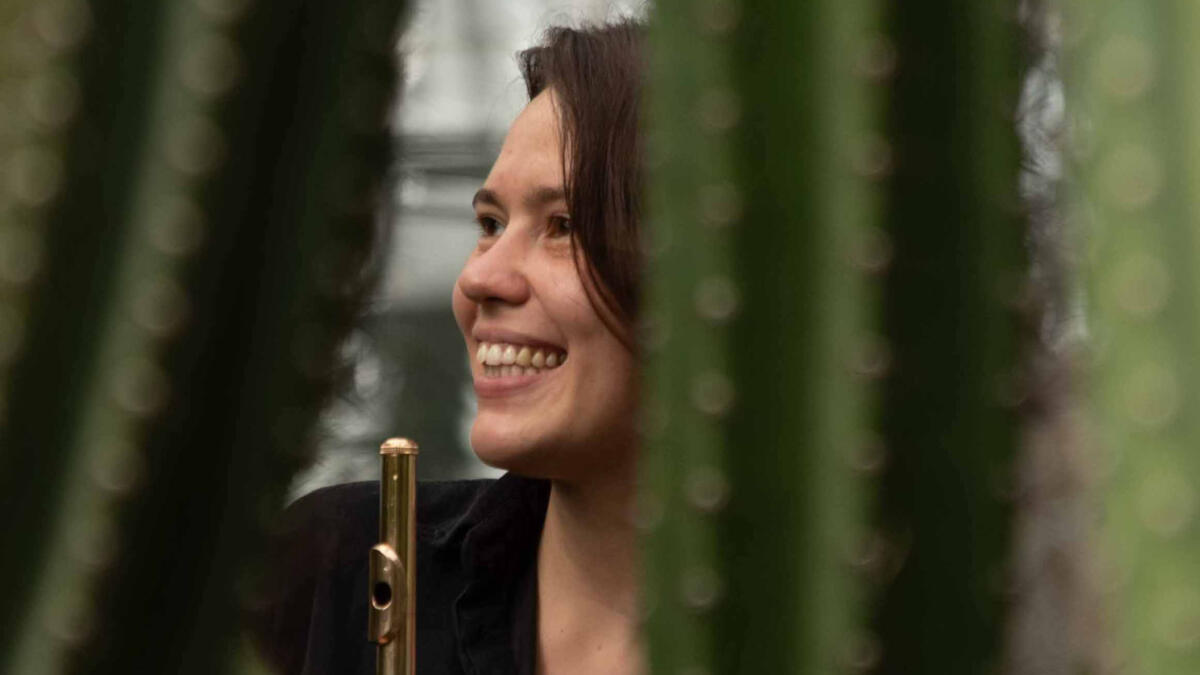
phædrus – ecological actions of resonance through uncharte
How can interpreters, curators and creators of uncharted music, facilitate resonance in listening today?
Hartmut Rosa‘s Resonance Theory (2016) provides us with a qualitative framework to understand our relationship to the world through responsiveness and mutuality.
The presented practice, encompassing the results of a two-years long research, addresses the question above by breaking down several social, institutional and medial enabler (or de-enabler) of resonance in the ecosystems surrounding the production and fruition of music that hasn’t been yet aesthetically categorised – hence the definition of “uncharted” music.
Interweaving music performance, inter-research collaboration, improvisation, live-composition, visual art and participatory creation, „phædrus“ is rooted in the idea that resonant-seeking practices, when pursued, prioritised and nurtured, do not hinder the “evolution” of musical language (as implied by Milton Babbitt in “Who cares in you listen?” 1959) but rather foster it.
„phædrus“ shapes as a year-long process of musical and visual creation realised through weekly interactions with five people living in Vienna. Each creative act – musical or visual – emerges from the inputs generated by conversations and memories, and enables their gradual co-creative engagement as the relationship between them and the researcher develops. As a result, they will be invited to experience the final work they contributed to create in five culminating performances, given for, to and with each one of them. The artworks, in archivable form, will be then gifted to them.
Each performance is realised in collaboration with a different artistic researcher, fostering a contamination of knowledge(s). The segment of the practice presented here has been pursued with Livia Schweizer, (ph.D. candidate, Sibelius Academy), whose work on non-conventional musical notation as a medium for inclusive and multicultural co-creative practices, enriches the creative dialogue established with Elisabeth Trittremmel, one of the five contributors of „phædrus“.
Biographies
As a free-lance clarinetist, electro-acoustic performer, artistic researcher and curator, Ettore Biagi is active on the international scene of classical and contemporary music. Performances have taken him on some of the most prestigious venues and festivals worldwide such as Lucerne Festival, Großes Festspiele Salzburg, Wiener Konzerthaus, Paris Philharmonie, Berlin Philharmonie, Elbphilharmonie Hamburg, Barbican Center, Helsinki Musica Nova, IRCAM Centre Pompidou, Pierre Boulez Saal, MusikFest Berlin, Théâtre du Châtelet and many others.
His dedication to contemporary music has led him to consistently perform in world-premieres and closely collaborate with several prominent composers such as Wolfgang Rihm, Beat Furrer, Liza Lim, George Lewis, Helmuth Lachenmann et al.
Ettore is also an artistic researcher, improviser and a live composition performer. His doctoral dissertation project, carried out at the Doctor Artium Program of the Vienna University for Music and Performig Arts, focuses on investigating the reality of new music fruition in late-modern western society, questioning the role of music institutions, concert formats, technological mediation and community value from the perspective of H. Rosa’s Resonance theory. He has presented his research in MuMok (Museum of modern Art in Vienna), Brunnenpassage, Lucerne Festival, and he is going to present his latest work to international artistic research conferences in Tallinn (EPARM25) and Porto (SAR25).
Livia Schweizer (she/her) is a flutist, improviser, educator, and artistic researcher working across music, community arts, and sound art. Raised in Italy and based in Helsinki since 2014, she is deeply engaged in intercultural collaboration and experimental practices. Her work focuses on improvisation, non-conventional notation, and community-based artistic creation. Livia is a founding member of the Earth Ears Ensemble, of Suut- Ensemble and she is part of the European Composers Improvisers Orchestra (E.C.I.O.).
Her artistic research explores how text and graphic scores, through open forms, can foster collaboration, co-creation, and embodied expression within multicultural and heterogeneous groups. By shifting traditional performer roles and inviting diverse imaginations, these notational approaches act as tools for inclusive dialogue and shared creativity. She is particularly interested in how these practices can create new musical languages that reflect the identities and experiences of those involved.
Livia is also a flute and music teacher at the International School of Music Finland, and she has led workshops on text scores as catalysts for creativity in Antwerp, Helsinki, and Lübeck.
Dario Savino Doronzo
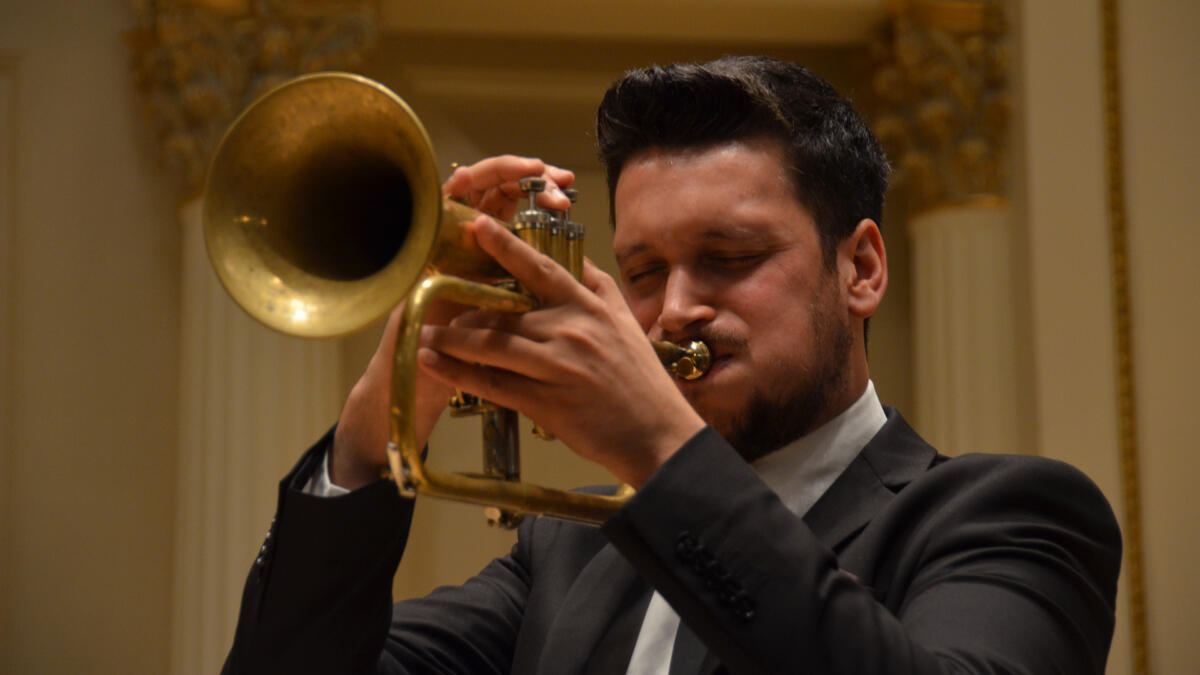
The progressive didactic approach of Jean-Baptiste Arban in the Military School: Grande Méthode Complète de Cornet à Pistons et de Saxhorn composée pour le Conservatoire et l’
The instrumental didactic methodology of brass has evolved over the years, enriching each time with information and advanced techniques; the instrumental performance practice has reached such a high caliber over the years that it has ‘created’ technical interpretative volumes that can examine and develop the produced material through didactic exercises for the musician’s progressive development. Though we are amazed at noting that some historical methods, even with the appropriate revisions and additions of new notions, are still spearheading for teaching at the Music Conservatories. This study aims to highlight the great importance of the «Grande Méthode Complète de Cornet à Pistons et de Saxhorn» published in Paris in the early years of 1859 (Léon Escudier Ed.) by the virtuous French cornetist, composer, teacher Joseph Jean-Baptiste Laurent Arban for the Military School annexed to the Paris Conservatory. The contribution starts from the analysis and the study of an example of the first edition of the Grande Méthode and then it introduces the figure of Arban (Saxhorn teacher at the Military School annexed to the Paris Conservatory). In particular, the research aims to answer the following question: about 165 years after the publication of the Arban method, is it possible, through an in-depth study of this work, to create new artistic products that, with an instrumental compositional approach, connect the historical tradition of the instrument with contemporary artistic needs?
Biography
Dario Savino Doronzo graduated in Trumpet, Jazz Music, Conduction for Choir, Science and Technology of Sound. He has performed, as a soloist, in major Concert Halls: Carnegie Hall (NY), International Trumpet Guild of San Antonio (TX), Auditorium Juan Victoria of San Juan (AR), Kailash Mital Theatre of Ottawa (CA), Yeldeğirmeni Sanat of İstanbul (TR), Studio Acusticum | Piteå University (SE), Auditorium Parco della Musica of Rome (IT), etc.
For DiG Label he recorded CD Reimagining Opera and the CD Reimagining Aria.
PhD Candidate, he is dedicated to artistic and musical research. He is the author of numerous musicological and music research essays published in specialist journals and miscellaneous volumes. He is regularly invited to hold conferences and lecture-concerts for important research institutions, including: Carleton University in Ottawa, Maltepe University in İstanbul, University at Buffalo, Music Diaries in Thessaloniki, Maastricht University, Staffordshire University in Stoke-on-Trent, Luleå University of Technology, University of Music of Graz, University of Luxembourg, MDW University of Vienna, University of Bologna, Kulturni Centar of Novi Sad, International Trumpet Guild Conference.
He actually teaches at Giuseppe Verdi Conservatory of Music in Milan (Italy). www.dariodoronzo.it
Mercedes Krapovickas
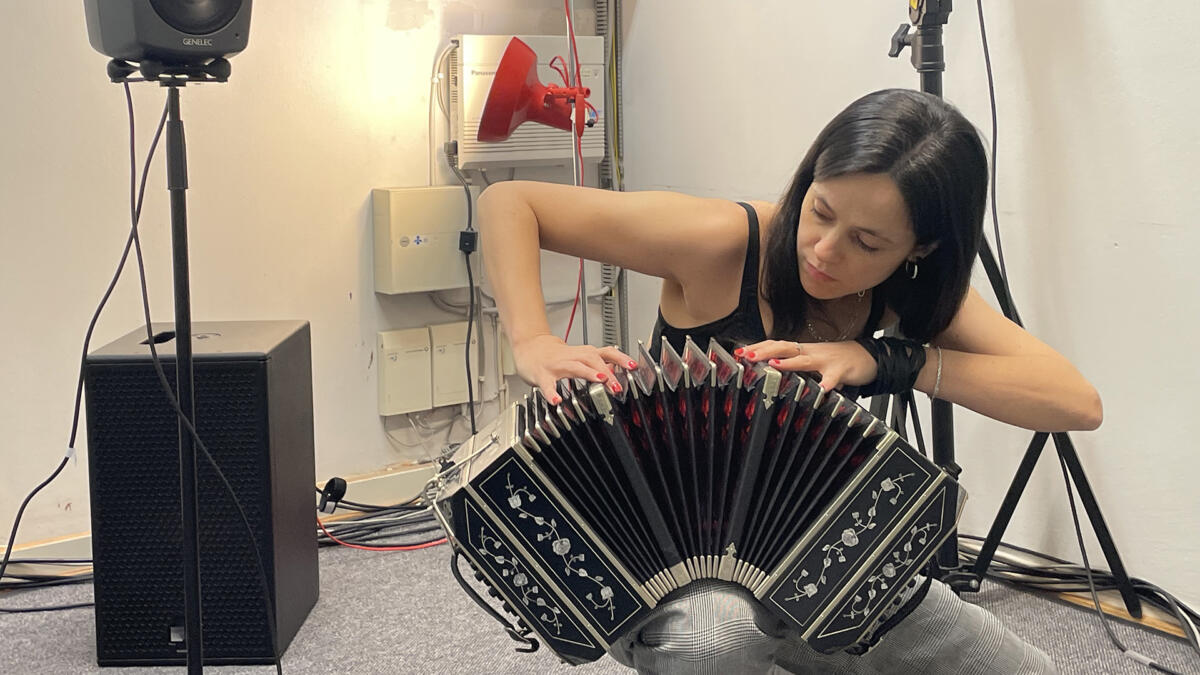
Bandoneon Resonances: Movement, Space, and Extended Techniques
This recital and research introduction explore the bandoneon’s role in contemporary performance practices, focusing on movement, space, and extended techniques. As part of my artistic research, Bandoneon Resonances: Exploring Contemporary Soundscapes, this presentation examines the instrument’s potential as an interactive and spatial element within electroacoustic settings.
The session begins with a brief introduction outlining my research framework, which investigates the bandoneon as an extended and augmented instrument. This involves exploring its physicality, its role in directing musical flow through movement, and its interaction with electronics. I will discuss how spatialization, in physical gesture and audio diffusion, expands the bandoneon’s possibilities, creating dynamic sonic environments that evolve in real time.
The performance segment includes two works that illustrate different aspects of my research. The first is an improvisatory study in which the bandoneon’s bellows movements serve as both sonic and spatial triggers, using real-time processing to alter its acoustic properties. The second piece integrates live electronics with extended techniques, including unconventional air manipulations, prepared elements, and digital augmentation.
Through this presentation, I will explore questions of embodiment, gesture, and flow. The recital and research reflect on the challenges and discoveries of working with movement-based interaction and extended instrumental techniques, opening the floor for discussion on the evolving role of traditional instruments in contemporary experimental practice.
Biography
Mercedes Krapovickas is a bandoneonist, pianist, composer, and sound artist from Argentina, now based in Finland. She explores the bandoneon through movement, extended techniques, and electroacoustic augmentation. Currently pursuing a doctorate at the Sibelius Academy’s Music and Technology Department, her research, Bandoneon Resonances, investigates spatialization, embodiment, and the instrument’s role in contemporary music. She has performed across Europe and Argentina and worked in dance and circus productions as a composer and sound designer. She holds a Master’s in Sound in New Media from Aalto University and has studied electroacoustic composition, musicology, piano, and composition in Argentina and Finland.
Emilia Lajunen
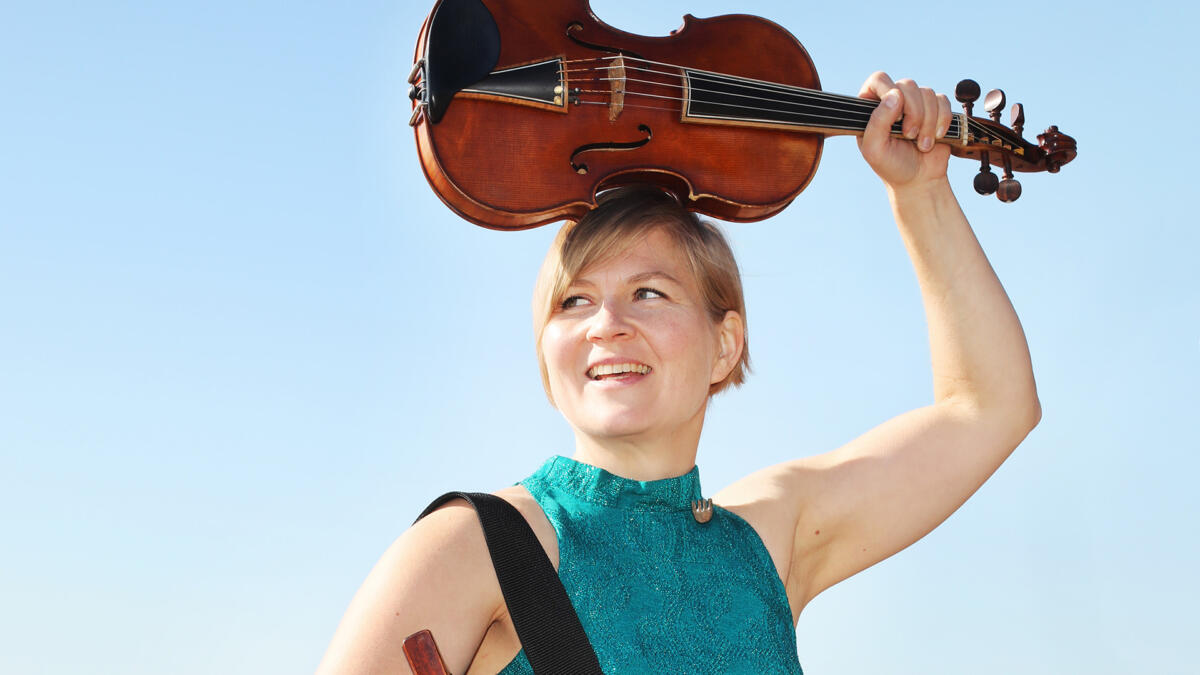
Musician embodied knowledge and simultaneous playing and dancing as a method following silent voices of archive recordings
In my recently completed artistic doctoral studies as a fiddler and nyckelharpa player, I delved into the expression of the dancing musician-composer and the tradition of the contemporary professional folk musician. Practice-based artistic research and embodiment formed the backbone of my research. Dance and movement led my artistic research not only to new art, but also to things that I could never have seen before. However, intuition is a force whose listening has made much of my artistry but has also led me to new challenges. The research raised questions and observations about the gender embodied in my music, and on the other hand about my position as a musician and artist and my positioning in certain roles.
I have positioned myself in a masculinely defined continuum of tradition. There are remarkably few instrumental compositions by women to be found in the archive recordings. How do I deal with it as a researcher musician? Is it possible in this day give a voice to what is missing from the archives?
As this research questioning, I am now doing artistic research. I have been spending hours and hours by going through archive recordings in Tampere´s sound archives of Folklives Archives and SKS Finnish Literature. How would sound of some examples of music and thoughts which will born with connection and through artistic research from collection silent voices of archive recordings?
Keywords: embodied knowledge, passing tradition, simultaneous dancing and playing, archive recordings, female musicianship, artistic research
Biography
Emilia Lajunen is a well-known Finnish folk musician, known for her personal, strong, and modern style of playing the violin. Her style of playing claims its origins in archaic heritage and fiddler music. Lajunen’s instruments are the 5-string fiddle, kontrabasharpa and nyckelharpa. She is a member in such groups as Juuri & Juuri, Duo Emilia Lajunen & Suvi Oskala, Ritva Nero. Lajunen has performed at various stages in Finland and abroad in the Nordic countries, India, USA, Canada and South Korea. She has released two solo albums, Turkoosi Polkupyörä (2012) and Legacy of the Dead: Deep in the Dregs (2023).
Arja Kastinen
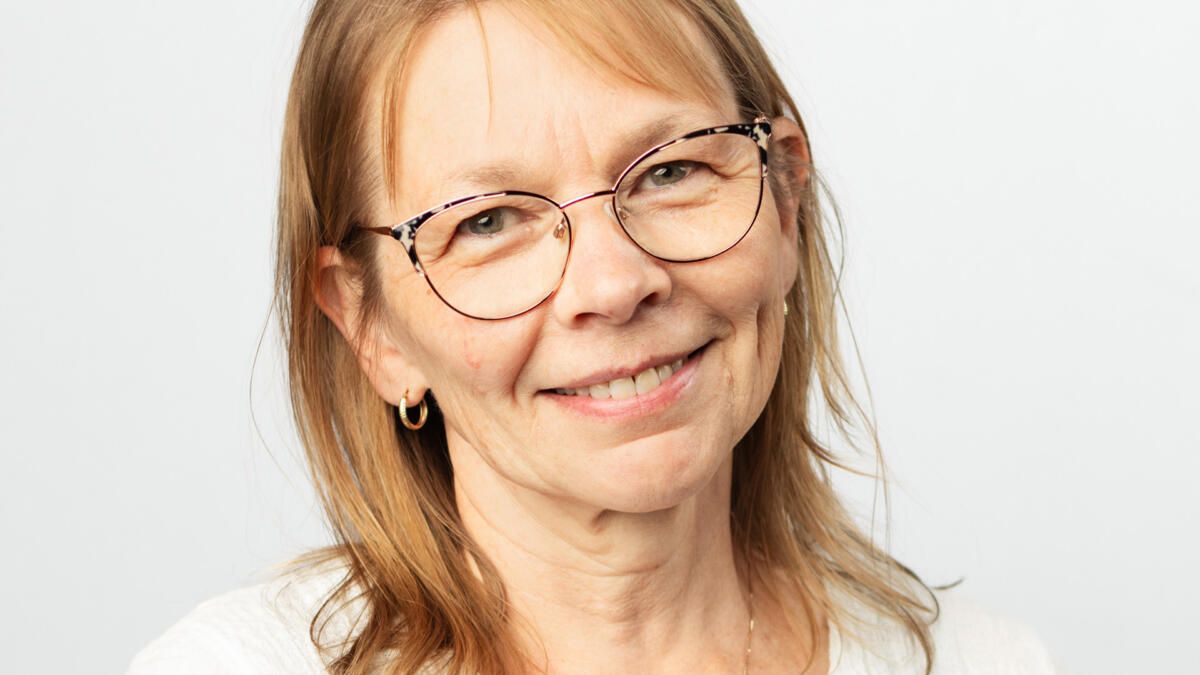
How the unrecorded becomes reality through experience and why it matters
It is said, with good reason and convincing arguments, that all too often our attempts to connect with the past by reviving archival material turn out to be nothing more than a staging, a modernised fantasy of what we want to show of ourselves in today’s world. Wouldn’t this be even more true if the music of the past were just a memory within stories, without any concrete transcriptions and sheet music to lean on? What if the original music had deeper ontological meanings than just serving as aesthetic material, and the musicians valued very different things from what we think? What if their system of music had nothing to do with our contemporary standards?
In this case, the search for a connection through experiencing music by making it requires the help of other disciplines, such as cultural history, acoustics, archaeology, folklore, brain research, musical instrument research, and so on. Combining this knowledge with actual music-making opens up a way of capturing the true essence of the music of the past, or at least increasing our understanding of it. In fact, the experience of making music brings such a deeper insight that without this element, other knowledge remains limited.
In my presentation, I will play an improvisation based on my understanding of the aesthetics of the 19th century illiterate Karelian kantele players. I will use some copies of museum kanteles with an old playing technique and tuning system. The music is a combination of our understanding of the past and my personal experience of its meaning.
This is undoubtedly a staging, but does it contain or convey any other information?
Biography
Arja Kastinen, DMus, is a visiting researcher at the University of the Arts, Sibelius Academy, Mutri Research Unit. Since receiving her doctorate in 2000, she has continued to focus on the aesthetics of the music and the acoustic phenomena of the kantele in the Karelian kantele improvisation. Currently, she is working on the project “Kantele of the Runosong Culture and the Dialogue of Creativity”. She has published articles, videos, albums and learning material related to the subject. The project website: https://www.temps.fi/en/research/kantele-of-the-runosong-culture-and-the-dialogue-of-creativity/
Blake Proehl
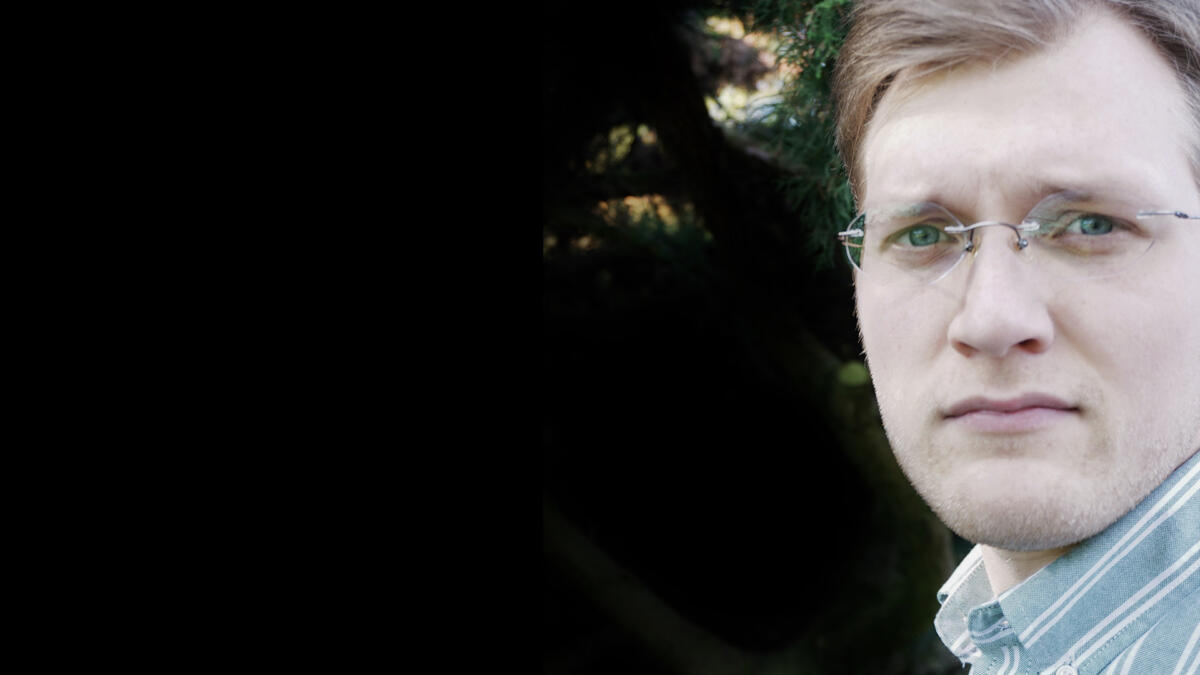
A Tangible Difference: Defining a Classical Clavichord Idiom Amid the Rise of the Piano
In his autobiography (1772) Carl Philipp Emanuel Bach states that his “chief effort, especially in recent years, has been directed towards playing and composing as lyrically as possible for the clavichord”—a curious statement from a composer who had already become renowned for his clavichord compositions and his famous little Johann Gottfried Silbermann clavichord. Had he not already excelled in this scope? Or, had his new Christian Ernst Friederici clavichord changed the status quo?
In a 1773 letter to Johann Nicolaus Forkel, Bach’s preference for Friederici clavichords, such as his own, is already clear, and his 1790 estate catalog lists this instrument as his primary compositional tool in Hamburg. This instrument presented new challenges and possibilities not only for Bach, but also his contemporaries.
I will present recorded samples of repertoire from 1770–90 to illustrate what is not only possible on instruments like the Friederici clavichord but also to start defining a Classical clavichord idiom. Works from clavichord-centric composers—particularly those with ties to Bach, Hamburg, and Friederici, such as N. G. Gruner and F. S. Sander—will be utilized for these purposes. As I will demonstrate, the techniques and textures of these pieces will shed light on the compositions of C. P. E. Bach and his Friederici clavichord. Furthermore, they even blur the boundaries between clavichord and piano music of this period—challenging today’s performers to reassess their keyboard repertoire conceptions and views based on one-sided readings of methods like Daniel Gottlob Türk’s School of Clavier Playing (1789).
Biography
Blake Proehl is an historical keyboardist specializing in fortepiano and clavichord. He holds a Master of Early Music from the Royal Conservatory of The Hague (NL), a Master of Piano Performance and Pedagogy from Baylor University (Texas, US), and a Bachelor of Music Performance from the University of South Dakota (US). His activities at the National Music Museum (Vermillion, South Dakota) ignited his interest in early keyboards and historically informed performance. Blake is a PhD researcher at Orpheus Instituut in Ghent, working within Tom Beghin’s Declassifying the Classics cluster.
Maija Turunen
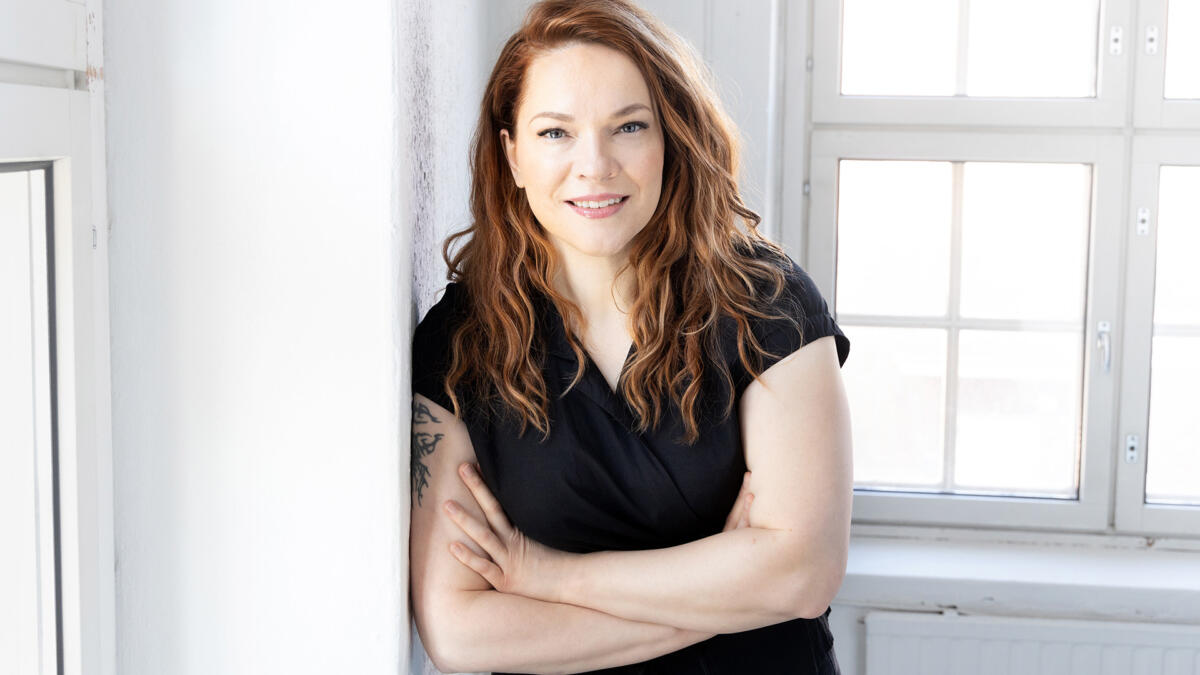
Resonating with the Past: AI-Driven Restoration of Historical Singing
AI-based generative restoration methods offer a groundbreaking approach to historical vocal recordings by reconstructing lost frequencies and enhancing clarity beyond the limitations of early recording technologies. Acoustic recording methods, used before the introduction of microphones in 1925, often failed to capture the full timbral richness and nuances of a singer’s voice, resulting in a distorted or incomplete sonic image. By leveraging machine learning techniques, particularly generative models trained on contemporary vocal data, researchers can restore spectral details, bringing historical voices closer to how they might have sounded in their time.
This method not only refines our perception of past vocal artistry but also raises critical questions: What can we learn from these restored voices? How did historical singers shape vocal aesthetics, technique, and interpretation in ways that may have been lost over time? For modern performers, this approach offers an opportunity to engage more deeply with past singers—not only as distant historical figures but as artists who were flesh, bone, and cartilage—human beings in all their fragility and depth and whose choices and styles have shaped the vocal art we know today. The ability to hear early 20th-century singers with greater fidelity creates a sense of artistic lineage, allowing singers today to study and even emulate historical techniques with unprecedented accuracy.
AI does not impose a singular interpretation but rather provides a tool for re-examining history with fresh perspectives. By reconstructing sonic details lost to outdated recording methods, AI-driven restoration expands our understanding of vocal tradition, performance practice, and the evolution of operatic and classical singing. This work sits at the intersection of musicology, sound engineering, and artistic interpretation, opening new pathways for both academic research and practical applications in vocal performance.
Biography
Maija Turunen has a master’s degree in vocal performance and music technology. She specialises in recording classical music and has worked extensively with singers in a studio environment. Turunen has performed as a singer in several opera productions and has performed a variety of lied repertoire with a pianist. The PhD project concerning historical vocal recordings and AI based restoration methods is done in collaboration with the Acoustics Laboratory at Aalto University and with Dr. Inja Stanović, a research fellow at the University of Surrey. The research has been funded by Kone Foundation, Finnish Cultural Foundation, Finnish Concordia Fund and Sibelius Academy Foundation.
Kristiina Ilmonen
Expanding Inwards – Being in music without a tune
The intangible cultural heritage of Finnish and Karelian older musical traditions – runosong, kantele and jouhikko music, shepherd music among others – are based on variation and improvisation, using repetitive melodic and rhythmic patterns. A specific performance style is the orally learned tradition of long-duration music-making, which contemporary folk musicians often call long aesthetics (pitkä estetiikka), where the performer approaches a meditation-like mindset. The music does not begin and end as a tune often does; instead, you enter it like an invariably existing stream and choose to come out when needed. Syvälle (Into the Deep) – A folk music improvisation laboratory as an alternative to tune-based music is a collaborative artistic research project that explores the process of making and performing contemporary folk music based on historical sources and creative experimenting. The Syvälle artistic collective shares a common experience where this music has profoundly impacted us as musicians and more – as humans.
The deep essence of this old runosong culture calls today’s performers and composers with another worldview of how art can be seen, created and experienced. It challenges the customary outcome of musical creativity, the tune or the composition: Can music in our modern society manifest itself in other ways than as works? What can be found in the musical creation process if not forced into the typical forms and venues – how does lingering in the unfinished affect the performance or, in fact, the performer? How can the archaic allow and inspire contemporary expression? What do memory-based music-making and the micro-varied music of long aesthetics do to the musician-composer who embraces it – what kind of expression might emerge? When does improvisation become a composition, and does it matter?
This lecture-recital will delve into the creative performer’s expression and intuition, finding our path in improvisation into this older way of being in music. Perhaps the aesthetics of slowness, gradual change, embodied listening and outward stillness but expanding inwards could lend us an alternative to the current societal mindset of continuously striving towards faster, higher, stronger – the demand for all-around effectivity, being in control and so-called success in all life areas, including music.
Keywords: improvisation, artistic research, music as/without tunes, memory-based music, long aesthetics, sustainability in music
Biography
Among the pioneers of the Finnish contemporary folk music movement, Dr Kristiina Ilmonen is a performing musician, composer, educator, practice-based researcher, and folk music professional. She specialises in Finnish traditional music, wooden flutes, percussion, and improvisation. Ilmonen performs solo with folk winds and in various ensembles, has toured in over 20 countries and plays on over 30 CDs. Free improvisation, contemporary dance, and site-specific art, often in outdoor locations, have been essential themes in her career as a collaborating musician. She has received scholarships and national awards for her artistic work.
She was the Head of the Sibelius Academy Folk Music Department from 1998–2004 and has been developing the Department’s syllabus, educational philosophy, and methodology as one of the primary teachers since then. Ilmonen has worked since 2014 as the Professor of Folk Music at the Sibelius Academy, leading a doctoral education unit of currently 15 students. Ilmonen is a member of the University of the Arts Helsinki Board. She has served as Vice Head of the MuTri Doctoral School and Research Unit, as Vice Head of the Uniarts Helsinki Collegium, Head of the Professors’ Council, and as a member of the Steering group of the Centre for Artistic Research (CfAR).
Ilmonen graduated as a Doctor of Music from the Arts Study Programme at the Sibelius Academy in 2014, studying runosong culture, especially shepherd music and its instruments in Finland and Karelia and adapting the musical heritage to enrich her contemporary expression, while co-developing a new model of a pinewood folk flute. Her current research interests include artistic research, historically informed performance in folk music, improvisation, collaborative creativity, folk wind instruments, sustainability in music and folk music pedagogy. Ilmonen has founded and chaired the Finnish Folk Music Researchers’ Symposium since 2015 and founded the Journal of Finnish Folk Music Research Satasarvi in 2020. She is the Principal Investigator of the collaborative artistic research project Syvälle – Kansanmusiikin improvisaatiolaboratorio teoskeskeisyyden haastajana 2024-2026, funded by the KONE Foundation.
Elisa Rumici
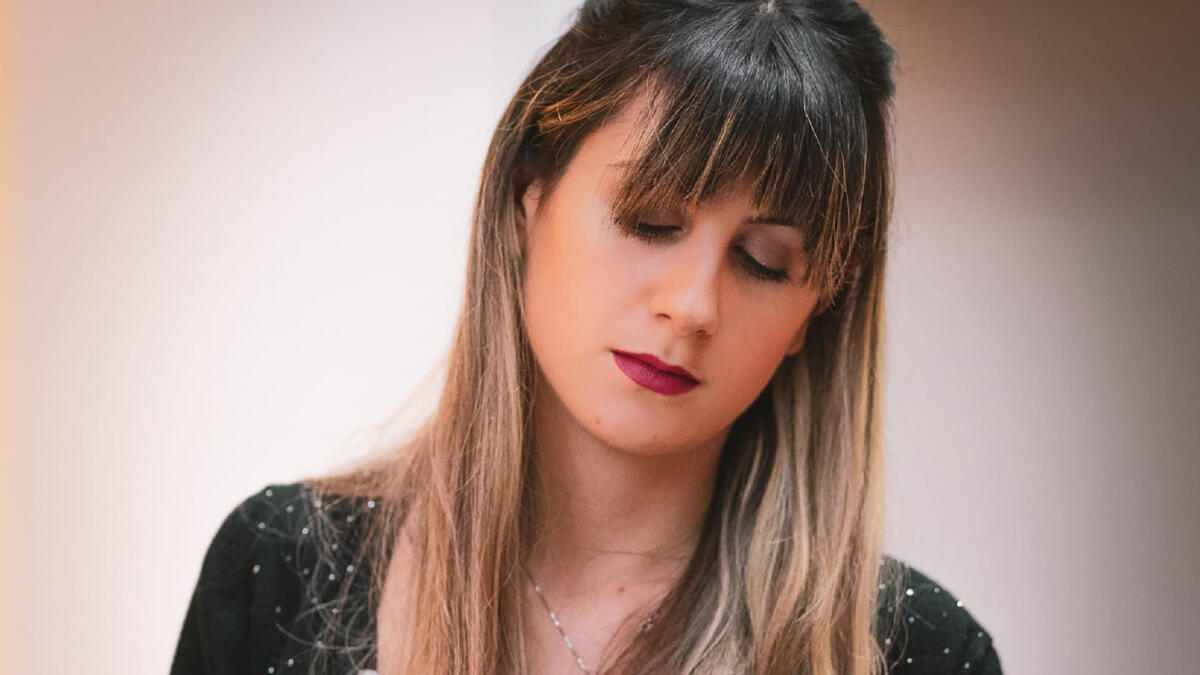
Piano virtuosity in the 20th century: the Etudes on intervals by C. Debussy and E. Rautavaara
- E. Rautavaara: Etude Op. op. 42 N. 1
- C. Debussy: Etude L 136 N. 4
- E. Rautavaara: Etudes Op. 42 N. 4,5,3,2,6.
- C. Debussy: Etude L 136 N. 5.
This lecture recital explores 20th-century piano virtuosity through the performance and analysis of Einojuhani Rautavaara’s Etudes op. 42 (1969) and Claude Debussy’s first Book of Etudes (1915). The decision to focus on these two collections was influenced by the etude’s historical significance and its enduring role since Romanticism as a vehicle for virtuosity. By presenting the etudes as a complete set and structuring the program according to intervallic focus, the recital aims to highlight both composers’ approaches to virtuosity, emphasizing emphasizing continuities and departures from established conventions. The performance is integrated with a discussion that redefines virtuosity in the context of twentieth-century pianism, investigating the relationship between contemporary technical developments and traditional parameters such as speed, precision, and power. By reassessing virtuosity in light of evolving aesthetics, the lecture examines the expectations placed upon performers and the technical and interpretative demands of this repertoire. This study combines literature review, score analysis, interviews with pianists, a practice diary, and live performances, assessing how audiences perceive this virtuosity and whether its impact aligns with the pianist’s exertion. Following the ideas expressed by “Virtuosity as a Performance Concept: A Philosophical Analysis” by A. Howard, “Virtuosity and Music” by A. Harman and “Pedagogy and Artistry in Select Twentieth-Century Piano Etudes” by I. G. E. Lee, this project explores the concept of virtuosity and its adaptability to new techniques or its potential resistance to change due to its close association with the romantic virtuoso tradition. Moreover, analyzing and performing Rautavaara’s and Debussy’s Etudes will provides insight into their individual conceptions of virtuosity and their personal relationship with the piano.
Biography
Elisa Rumici is an Italian pianist. Winner of twenty-five first prizes, she has performed across Europe in venues such as Milan Expo, Teatro La Fenice in Venice, and Gare du Nord in Basel. She is supported by the Cusanusstiftung.
In 2024 she recorded a CD dedicated to Gilda Ruta’s music for Da Vinci Publishing. She is pursuing a doctorate in artistic research at the Hochschule für Musik Freiburg and has presented her research at major conferences, including GMTH, ANDA, GATM and RAPP Lab. She has taught at the Hochschule für Musik Basel, Freiburg and the Conservatorio di Musica in Udine.
Marianna Abrahamyan
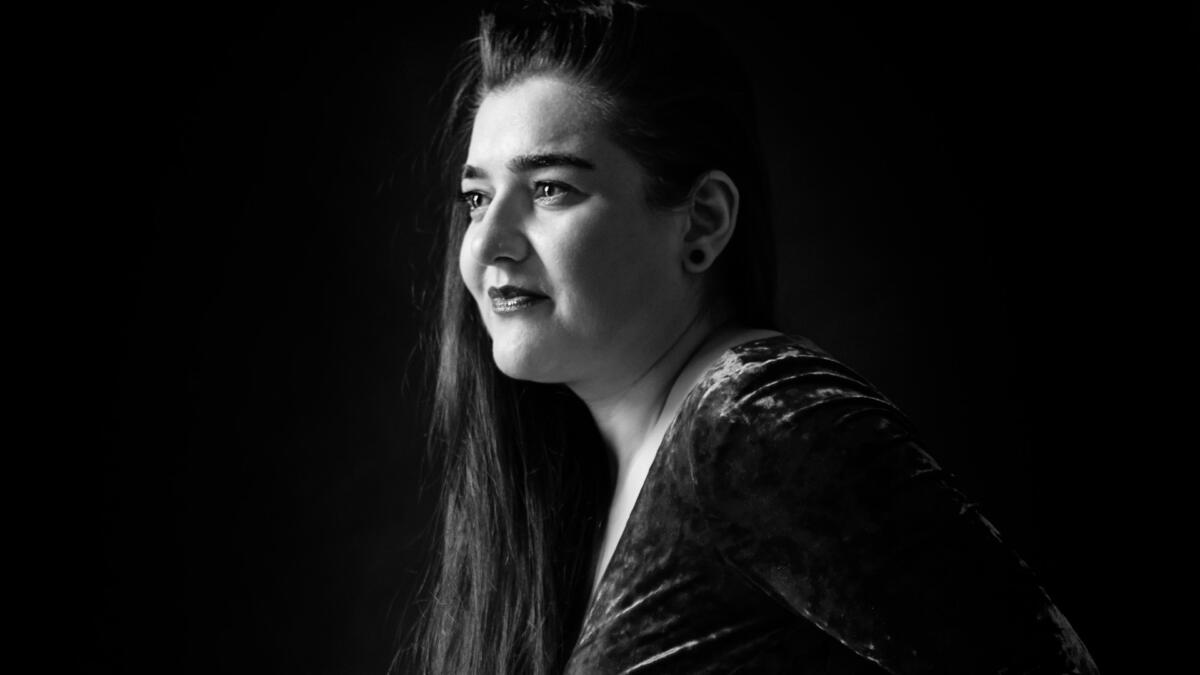
The Role of Dexterity in György Ligeti’s Piano Etudes, Trio, and Concerto
This research examines the role of dexterity in György Ligeti’s piano works, focusing on his Études, Horn Trio, and Piano Concerto. While Ligeti’s compositions have been widely analysed for their rhythmic complexity and polyrhythmic structures, the technical and physical demands of his pianism remain largely unexplored. This study investigates how Ligeti’s writing both aligns with and challenges traditional keyboard technique, particularly through fingering, touch, phrasing, and articulation.
By engaging with Ligeti’s manuscripts, historical fingering traditions, and personal performance experience, this research explores how he develops the concept of pianism. Connections to C.P.E. Bach’s fingering principles and Chopin’s approach to pianistic fingering provide insight into Ligeti’s virtuosic piano writing. Through a detailed analysis of fingering strategies—including omitted fingers, finger substitutions, redistribution, crossing, and more—the study highlights approaches that facilitate the execution of Ligeti’s dense textures and complex rhythmic layers.
Ultimately, this research argues that, despite their formidable pianistic difficulty, Ligeti’s works maintain a deep continuity with historical keyboard traditions. By shedding light on overlooked aspects of Ligeti’s pianism, the study provides valuable insights for performers and scholars alike, offering practical fingering strategies that enhance technical execution and musical interpretation.
During the lecture recital, I would like to perform two Etudes by Ligeti, as well as excerpts from other Etudes:
- Étude No. 1: Désordre
- Etude No. 10 Der Zauberlehring
Biography
Marianna Abrahamyan is an award-winning Armenian pianist and collaborative artist. She has performed at major venues, including Théâtre des Bouffes du Nord, Southbank Centre, and St Martin-in-the-Fields, and has appeared on Radio France and BBC Classics Unwrapped. A laureate of the Orléans International Piano Competition, she has collaborated with leading composers and performed for King Charles III. In 2024, she received a Doctor of Performing Arts from the University of St Andrews and the Royal Conservatoire of Scotland (RCS), with a thesis on dexterity in Ligeti’s piano music, and was appointed as a piano lecturer in the RCS Keyboard Department.
Grace Sun Park
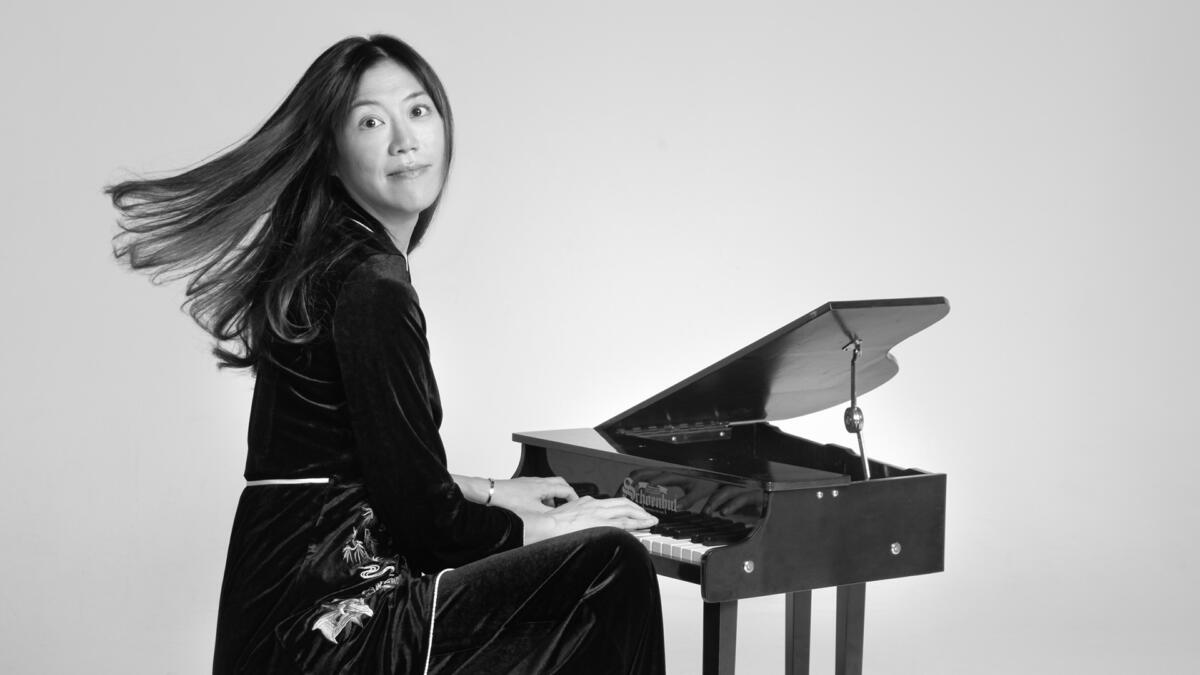
From禪(zen) to 線(line) to仙(transcendence) Rethinking the piano: Avant-garde piano performance as re-creation of artistic identity
This lecture-recital explores how avant-garde piano performance serves as a medium for re-creation of my artistic identity. This artistic research innitially began with self examination of identity shaped by the experience of living in multiple countries and adopting diverse cultures that led to a complex sense of self. This developed into a research question: how can I convey my multicultural identity through piano performance? Thus, this research is grounded in autoethnography approach and examines the intersection between the subject of identity and piano performance.
This research is grounded in the works of avant-garde artists, John Cage, Nam June Paik and Margaret Leng Tan. I explored how these artists challenged the traditional broundaries and opened a new path of performance practice that express their own identities. I investigated theoretical frameworks on identity in the context of performance art by these artists. As a result, I experimented with various approaches to determine the most effective way to convey my personal identity exploration by incorporating multimedia strategies and unconventional techniques such as harpsichord, toy piano, prepared piano, music box and recorded sounds.
In this recital, I present the background information and unique musical ideas that influenced each composer in developping the unique creations on piano. My aim is to perform these pieces to reinvent the role of a professionally trained pianist, examining the themes of cultural dislocation and personal identity and ultimately embracing a process of re-education. The element of destruction in avant garde music can lead to reconstruct my artistic identity and provides an opportunity to rethink the role of the pianist.
Repertoire:
- Henry Cowell, The Banshee
- George Crumb, ‘The Blue Rider’ from Metamorposes book 1
- Toby Twining, Satie Blues
- Phyllis Chen, Carousel
Biography
Classical pianist, Grace Sun Park boasts a cosmopolitan background. Beginning her journey at three years old in South Korea, she has since pursued her studies in Australia, Bulgaria and is currently completing her Doctor of Music journey at the Royal Irish Academy of Music in Ireland. Throughtout of her career, Grace has been working as a music teacher across various. international schools across the world.
Specialising in Early music performance, Grace’s research interests extend to the avant-garde movement, particularly the works of John Cage. Building on her foundation in Early music, she draws upon historical performance practices and interpretative techniques to inform her contemporary explorations. Inspired by her diverse and international experiences, she embraces interdisciplinary experimentation in music, exploring integral artworks and minimalism compositions that push the boundary of music.
Jussi Reijonen
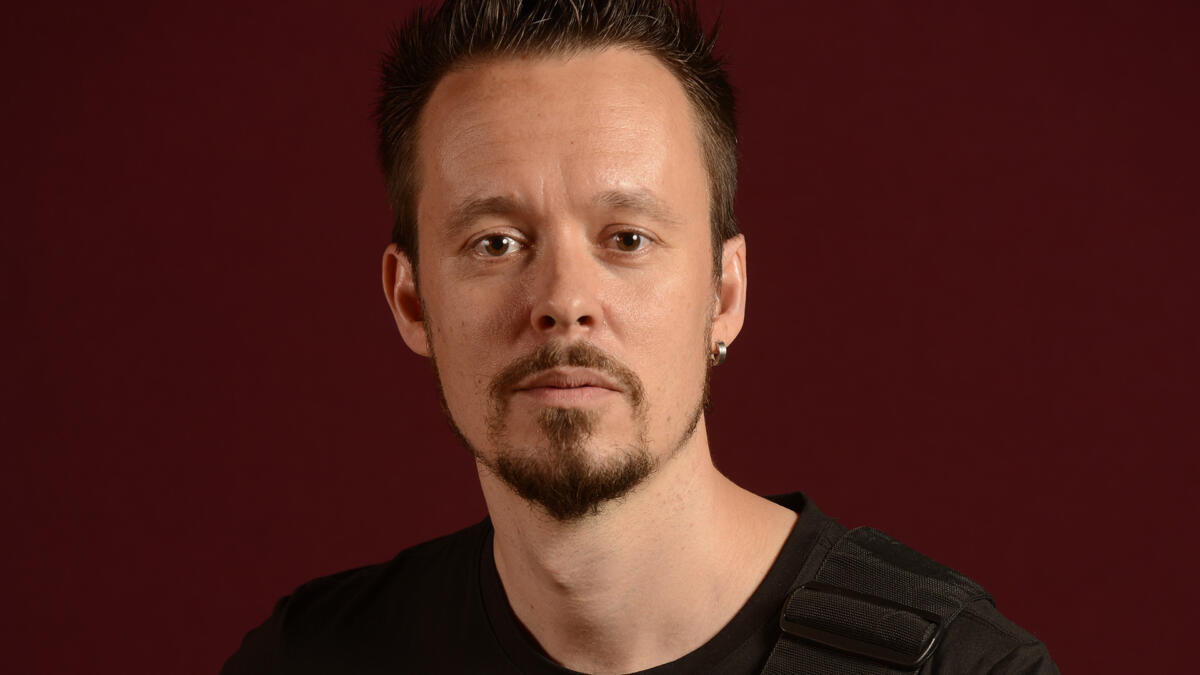
Weaving Connective Threads: Narrative Affordance of Aesthetically Diverse Musical Elements as a Cohesive Device in Transcultural Composition
If a composer’s praxis is situated at the intersection of multiple diverse aesthetic sources, how does one navigate the varying degrees of similarity and difference between their temperamental, temporal and textural aesthetics? How does one approach desired degrees of coherence or emulsion with musical materials whose sources have diverse notions of unity, structure and form?
Throughout history, storytellers the world over have woven coherent narratives from diverse elements – objects, ideas, concepts, characters, symbols, phenomena – by perceiving between them connective threads that others might not intuit. Irrespective of their geographical origin(s), oral and written narratives have intertwined syntax, subtext and sequence by recontextualizing their constituent elements in new environments formed through their temporal interaction. As an instrument of the mind, these narratives have enabled us to make sense of the world and expand our horizons through new frameworks, at times perhaps greater than the sum of their constituent parts.
I propose that for a composer at a crossroads of aesthetic sources, one methodology for approaching degrees of cohesion between musical elements with diverse stylistic features can be their interweaving into an overarching musical narrative. From a composer’s perspective – and contrary to the notion that difference is the antithesis of cohesion –, it is precisely their subjectively perceived differences that allow musical elements to have narrative affordances through their interaction. In short, I will argue that divergence itself can function as the connecting tissue between diverse aesthetics.
As my case study for this presentation, I will use my 5-part work “Three Seconds | Kolme Toista” (2021) for large ensemble, which draws from musical sources related to my formative autobiographical environments – northern Finland, Jordan, Tanzania, Oman, Lebanon and the United States – weaving from them a through-composed musical narrative interspersed with improvised sections.
Keywords: music composition, musical narrative, affordance theory, transculturality, practice-based research
Biography
Award-winning composer, fretted/fretless guitarist and ‘ud player Jussi Reijonen’s musical handwriting reflects a life lived in Finland, Jordan, Tanzania, Oman, Lebanon and the United States.
As a prism of the open spaces of the Arctic conversing with the maqamat of the Arab world, the rhythmic richness of Africa and the improvisatory spirit of American jazz, his latest album Three Seconds | Kolme Toista features an all-star nonet from Finland, Jordan/Iraq, Palestine, Turkey, Japan and the United States whose credits include Herbie Hancock, Simon Shaheen, Cécile McLorin Salvant and Yo-Yo Ma.
A graduate of New England Conservatory (M.M. ’13) and Berklee College of Music (B.M. ’11), he currently works as doctoral researcher and teacher at Sibelius Academy in Helsinki.
Tina Gelnere
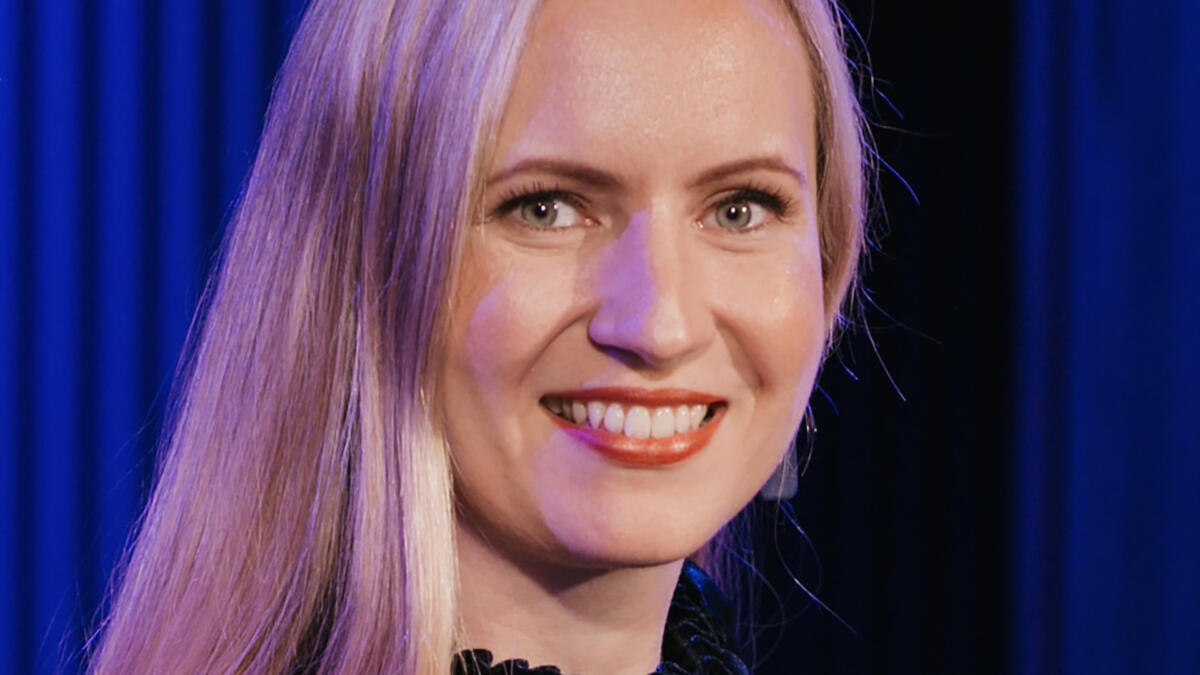
Exploring Authenticity in Contemporary Vocal Performance
My research explores the concept of authenticity in contemporary vocal performance, particularly in the context of the mono-opera genre and experimental improvisation. Authenticity is a multifaceted concept in artistic research, encompassing philosophical, psychological, and performative dimensions. Authenticity in vocal performance is not a static concept but a dynamic and evolving process shaped by context, interpretation, and performative choices. Brown (2012) highlights vulnerability and self-expression as key elements in achieving an authentic artistic identity. In music performance studies, authenticity has been examined through historical fidelity, personal interpretation, and the evolving role of the performer as a creative agent (Cook, 2014; Taruskin, 1995).
My doctoral research examines how vocal performers negotiate authenticity within structured compositions and open improvisational settings. Using an autoethnographic approach, I analyze the ways in which self-awareness, embodiment, and risk-taking contribute to an authentic artistic voice. I explore how contemporary vocal techniques and the integration of electronics influence perceptions of authenticity in performance, and whether improvisation serves as a tool to expand artistic self-expression beyond conventional boundaries (Auslander, 2022; Small, 1998).
At the Doctors in Performance Festival Conference, I will present my research through discussion and performance, demonstrating two different performance contexts:
- Mono-Opera: Excerpts from Stellan Sagvik’s Läppar och tunga…
- Improvisation with Electronics: A live exploration of spontaneous vocal and electronic interaction
By integrating theoretical inquiry with live performance, my research aims to contribute to the discourse on the evolving role of performers in contemporary vocal music. This presentation seeks to offer insights into how authenticity can be both constructed and perceived in the ever-changing landscape of artistic performance.
Biography
Tina Gelnere is a versatile mezzo-soprano with a strong background in opera, contemporary, and experimental music. She has performed with leading ensembles such as the Latvian Radio Choir, Sinfonietta Riga, and at renowned festivals including Sansusi and Arena. Her operatic roles range from Dorabella (Così fan tutte) to Angelina (La Cenerentola). A graduate of Jazeps Vitols Latvian Academy of Music, Royal Welsh College of Music & Drama, and the Arrigo Boito Conservatory in Parma (Erasmus), she also directs two choirs and teaches voice. Recognized for her artistry, she has received multiple awards, including the 2024 Pēteris Vasks Prize for interpretation and 1st place at the 2023 Sansusi competition.
Corinna Eikmeier
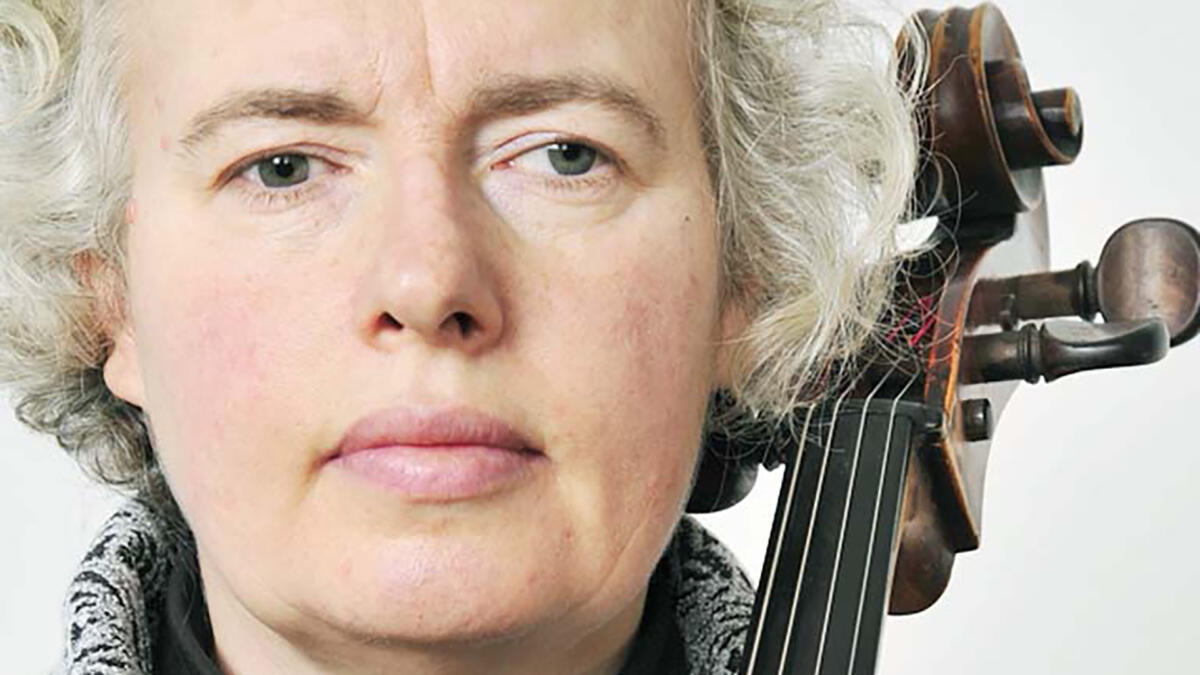
Bodyphonics
The following observations were a motivation for my research project and have led me to my research questions.
Representatives of somatic learning-methods specialize on work with musicians. I teached Feldenkrais at the conservatory and realized that many musicians with a classical formation are not able to apply the experiences made in Feldenkrais courses onto their instrumental play.
During Feldenkrais courses the “quality of improvised movement” is explored and apparently the patterns of movement trained in a linear way cannot simply be changed.
The descriptions of the body sensation during improvisation are similar to the sensations many people have after Feldenkrais courses. The same persons remember their moving sensations during interpretation mainly negatively. I conclude from that: not alone are the technical playing movements a cause for this, but it is the inner attitude while playing music, the perception, listening and the willingness to completely embrace the present situation.
Research questions:
- Which specific manners of action are significant for improvisation?
- What mutual effect is there between the specific improvisational manners of action and the quality of movement while playing music?
- Which improvisational manners of action are being dealt with implicitly in Feldenkrais-Method?
- Which possibilities of comparison can be detected between the learning strategies used in Feldenkrais-Method and improvisational manners of action?
During the research process I created a qualitative researchdesign inspired from the qualitative heuristic and artistic research.
After the PHD-project was finished in 2016 I started to develop the aspects of artistic research firther and bring it into improvisation performances. During the lecture-performance I will show examples in playing and explain the research context and examples of the results.
Biograhpy
Prof. Dr. Corinna Eikmeier studied Violoncello, Contemporary Music and Improvisation. Her main interest is improvisation as well as in her artistic work and in pedagogy.
From 2007-2009 she was a Dorothea Erxleben scholar, working on a project about feldenkrais and improvisation and developed a lot of improvisation exercises
She did her PHD project at Universität für Musik und darstellende Kunst Wien from 2010-2016 about Movement quality and improvisation.
From 2017-2018 she was a guestprofessor for music pedagogy at BTU Cottbus/senftenberg. Since 2020 she is professor for instrumental- and singing pedagogy at Musikhochschule Lübeck.
Further information: www.corinna-eikmeier.de
Reetta Näätänen
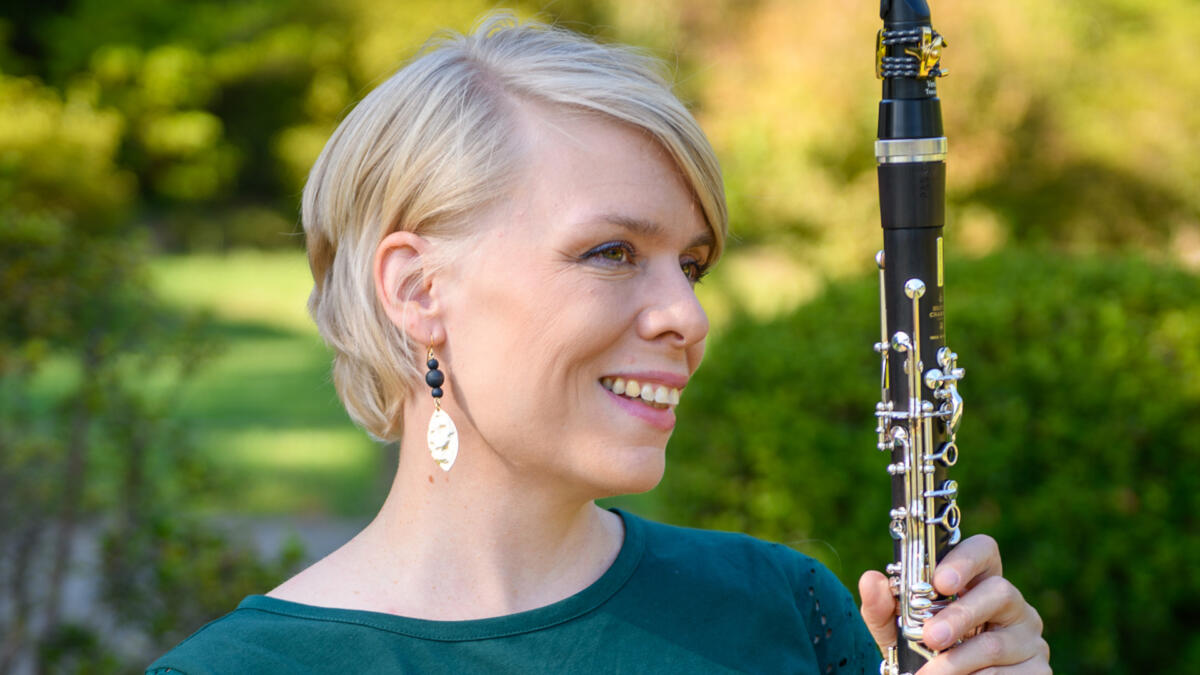
Culturally informed performance practice: From harmful stereotyping towards cultural intelligence
Western art music has been influenced by non-European cultures for centuries. The way in which the influences of foreign cultures are expressed through music and performance has included both intentional expressions of power and unintentional misrepresentations of foreign cultures, as well as natural and equal transculturation. What is the responsibility of the performer when, for example, by following the composer’s markings the performance ends up stereotyping minority or discriminated cultures? How can musicians act for equality in a performance of cross-cultural music?
Musical performance is an exercise of power although musicians or composers rarely consider it. A performance of a musical composition can either reinforce harmful images of another culture (for example, presenting an ethnic group as a caricature), or it can act as an action to transform old stereotypes into a more egalitarian presentation. Collaboration between representatives of different cultures and experts is always recommended when performing works that draw on multiculturalism.
The concept of cultural intelligence (CQ) has originally been explored in business studies: when an employee is posted abroad, the way he or she adapts to a foreign culture is of great importance. Psychological flexibility, communication skills and the ability to assimilate into a new culture will influence how well the person can function in culturally diverse circumstances. I argue that cultural intelligence is also an important aspect in cross-cultural music-making. Both musicians and composers would benefit from understanding the implications of their social responsibility in music that makes explicit use of cross-cultural material. Rather than a traditional Eurocentric view, interest should be focused on the messages that applications borrowed from other cultures can convey in different cultural contexts.
Biography
Reetta Näätänen is a clarinetist in the Tampere Philharmonic Orchestra and TampereRaw contemporary music ensemble. Apart from concluding a Master’s degree in music, she has also Bachelor of Arts degree in East Asian Studies (University of Helsinki). She is currently conducting her doctoral studies at the University of the Arts, Sibelius Academy. Her research addresses cultural sensitivity and the performer’s responsibility in the cross-cultural music performance context.
Pilar Mirailles
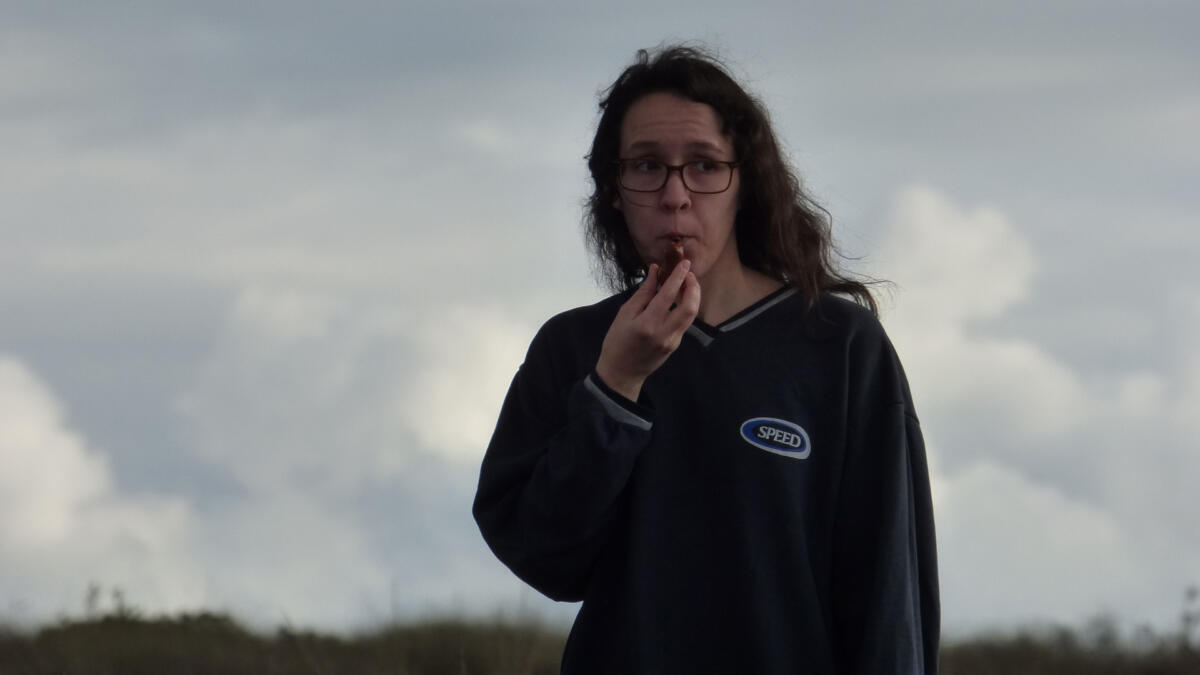
Situating artistic practice; An attempt to remain despite the immediacy era
The current preoccupation of my artistic research is the development of a situated practice – a practice that is sensitive to its time, place, and (shared) significations – seeking back an acknowledgment of our presence in the world, of the fact that we remain, despite the volatility in which we are embedded. I consider immediacy (that is, the unmediated way in which we perceive change in the world) as an extreme form of what Hartmut Rosa calls social acceleration. This fast and disposable perception of the world leads to a crisis of meaning-making that makes it increasingly harder to establish bonds with our present time, place, and the people inhabiting them. In an attempt to resist this default unmediated approach to reality, I propose remembering as a situated strategy that aims toward restoring those bonds, and which involves both the retrieval of lived memories and the creative imagining of those lost due to rapid change.
This presentation is an attempt to verbalize my first steps into this situated practice delving into my own process of remembering as a practice of acknowledgment. This process focuses on seeking places and objects from my homeland in rural Southeastern Spain that immediacy has rendered abandoned and obsolete, but which somehow still remain through the traces of memories that can be retrieved from them. During the presentation, a video showcasing several moments of my fieldwork will be projected while I embody the voice cover of its images and sounds. These memories from practices of witnessing and inhabiting – such as listening to, gazing around, or enacting (e.g. through sonic activations) – are evocated in an attempt to recreate their experience of presence and share their subsequent reflective process.
Biography
Pilar Miralles (Almería, 1997) is a Spanish researcher and artist focused on sound. She is currently conducting doctoral artistic research at the Sibelius Academy of Uniarts Helsinki. Her work focuses on situated practices that seek to restore a deep awareness of our reality and a sense of belonging to it, especially through the retrieval and resignification of memory. Her latest artistic projects have been developed at the ULYSSES Network (EU), the FCAYC Foundation (Spain), and SPAIN arts & culture (US).
Helga Karen
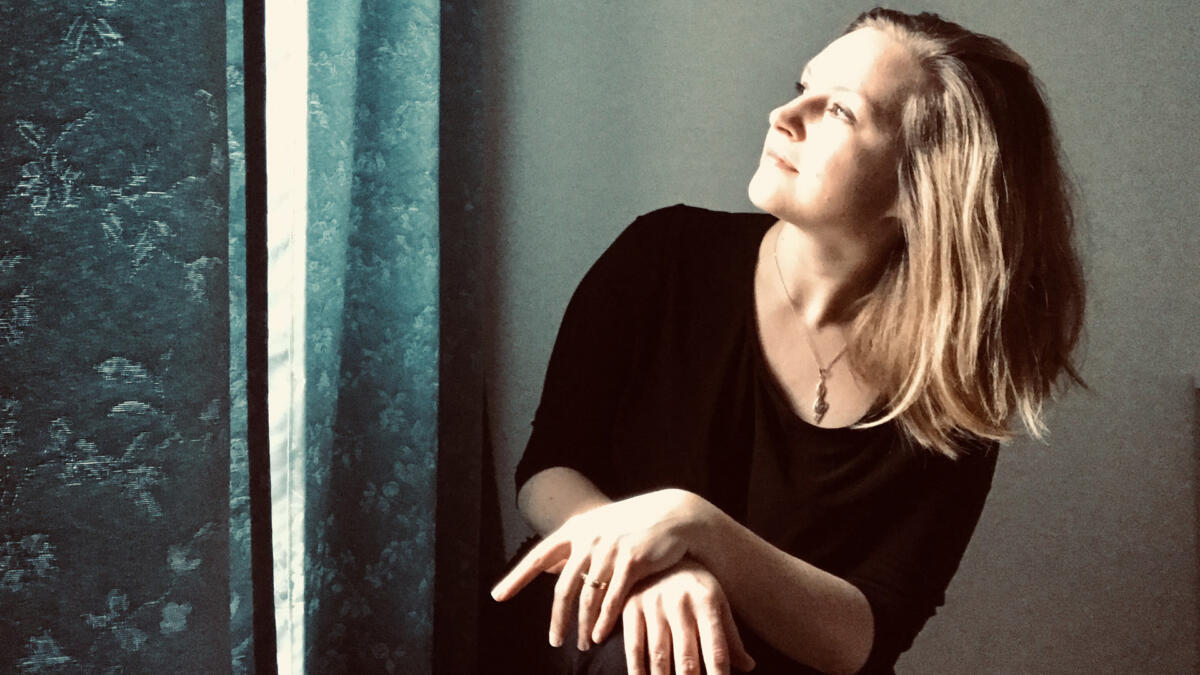
Practicing out loud: A lesson in exploring the complex simplicities in Stockhausen’s “Klavierstück IX”
Karlheinz Stockhausen’s (1928-2007) work “Klavierstück IX“is one of his more famous and most-performed piano pieces. Composed later in his compositional career—at the same time as some multi-layered, texturally complicated works—the score is surprising in that it is very transparent and at first simple-looking. However, the simplicities of this work hide behind them rather complex, contextually dependant details that not only make this piece stand out as a wonderful piano work but make practicing it even more demanding and intricate.
As a researcher–performer researching all of Stockhausen’s piano works by applying autoethnography, phenomenology and meta-research, I am able to treat each piano piece as part of the bigger compositional picture, explore it through the lens of both a performer and researcher and see the challenges of the pieces beyond the written score. In my lecture–recital, I will break down the pianistic and contextual challenges of “Klavierstück IX” and show the practice methods I use to help find the solutions. I will show the direct application of autoethnography to piano practice by narrating my practice out loud. I hope to show that the dual role of the performer and researcher can greatly elevate a piece of music that can seem simple and straight-forward but in fact is a poetic gem of the post-tonal piano repertoire when only given the opportunity and compositional context.
Program: Karlheinz Stockhausen (1928-2007) “Klavierstück IX” (1961)
Biography
Helga Karen is a Finnish pianist and researcher specialized in performance of classical contemporary music. She has performed as a soloist and chamber music musician in various contemporary music festivals and has given world premiere performances of works for piano solo and chamber music. Currently Helga is working on her doctoral dissertation at the Sibelius Academy in Finland. Her doctoral research project is exploring the artistic and technical realization of the pianist’s many roles in post-tonal and contemporary music through the autoethnographic practice-based research of Karlheinz Stockhausen’s piano pieces.
Neringa Valuntonyté
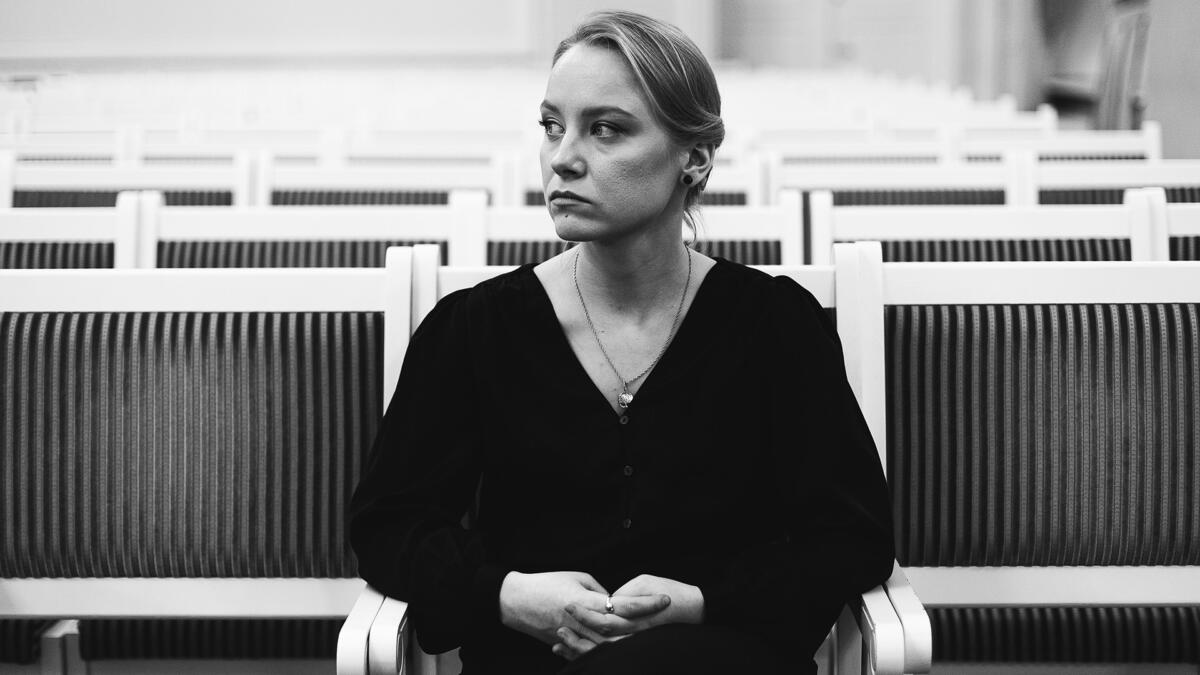
Embodied Stage Persona: Exploring the Interplay of Authenticity and Character Creation in Piano Performance
Over the past two decades, the concept of performer identity and personal branding has gained significant scholarly attention in response to the evolving landscape of academic art. As emerging performers navigate an increasingly competitive cultural industry, they integrate branding principles into their professional development, while established artists are often recognized not only for their artistic excellence but also for the cultivation of distinct public personas. With performer identity at the core of this discourse, it has become one of the central subjects within performance research.
A key question that emerges in this context is whether the performer onstage presents their “true self” or a constructed identity. However, from the performer’s perspective, this question evolves into a process of self-discovery, requiring an understanding of how identity expression shifts in the context of live performance. The concept of persona has been particularly useful in examining this phenomenon, highlighting the social and public dimensions of identity in academic performance settings. This raises an essential question: how does one perform themselves alongside the musical works?
This lecture recital explores two key perspectives: the pursuit of an “authentic” artistic identity and a more performative approach that involves the intentional crafting of a character specifically for the stage. The objective is to examine identity exploration in the process of persona creation and its execution through the application of acting techniques and fictional character development. This will be demonstrated through the performance of two distinct personas – both maintaining a sense of authenticity while existing as intentionally constructed characters.
Program:
- A. Pärt – Für Alina
- G. Ligeti – Musica Ricercata: Sostenuto. Misurato. Prestissimo
- L. van Beethoven – Piano Sonata No. 21, Op. 53 “Waldstein” (2nd movement)
Biography
Neringa Valuntonytė is a Lithuanian pianist known for her diverse solo and chamber music repertoire. She explores innovative performance concepts, curating conceptual concerts and placing a strong emphasis on rarely performed contemporary music.
Valuntonytė has performed as a soloist and chamber musician at festivals across Lithuania, Latvia, Estonia, Poland, Austria, Denmark, Finland, Ukraine, and Germany. She has collaborated with the Lithuanian National Symphony Orchestra, Lithuanian Chamber Orchestra, Lviv Chamber Orchestra “Akademia”, Vilnius University Chamber Orchestra, and the Szczecin Philharmonic Symphony Orchestra. In addition to traditional performances, she has developed and presented conceptual programs such as “Stories”, “The Waiting”, “(In)complete”, and “In the Loop”.
In 2025, Valuntonytė earned a Doctor of Arts degree in Music from the Lithuanian Academy of Music and Theatre with an artistic research project “Creating an Academic Musician’s Persona: From Stage to Personal Brand”. She previously obtained a Master’s degree from the University of Music, Drama, and Media Hannover and a Bachelor’s degree from the Lithuanian Academy of Music and Theatre.
Valuntonytė’s work engages with topics such as the evolving image of academic music, self-branding, self-management, and entrepreneurship.
Maarika Autio
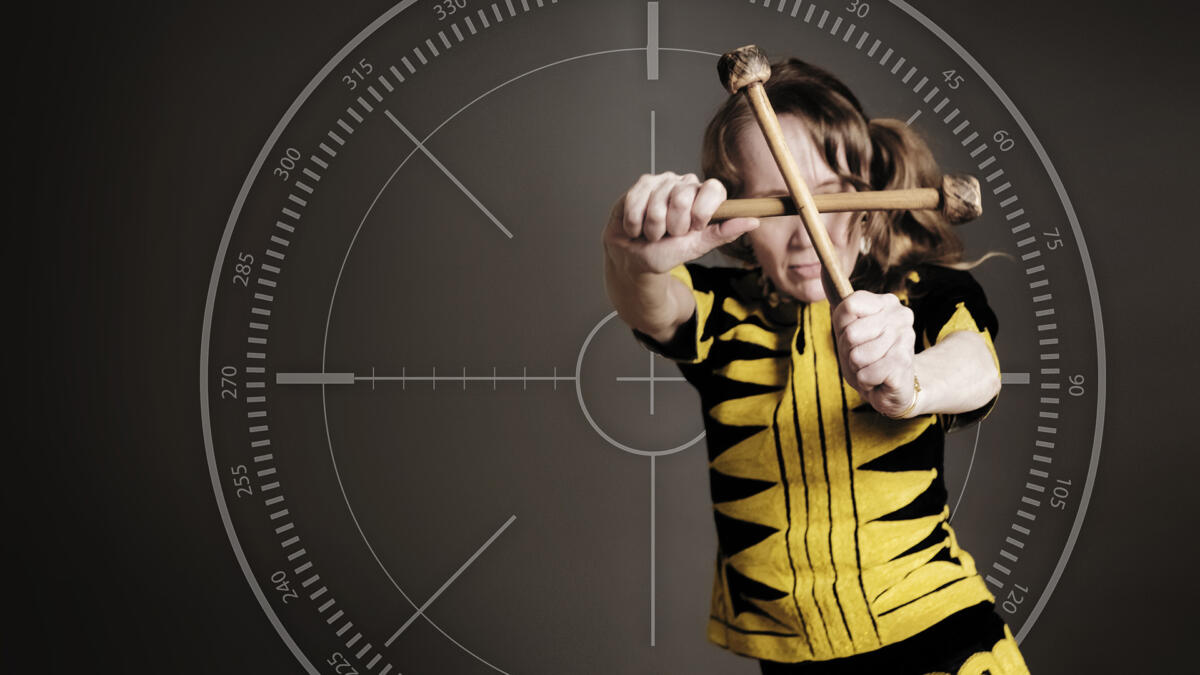
Approcreations, Subtitle: Exploring the creative freedom of a non-native musician with traditional instruments within riptides of cultural appropriation disputes
In a globalising world, intercultural influences have become more diverse than ever. Yet the code of good conduct on honouring distant sources of inspiration is still being written in the collective consciences of artists and art consumers alike. Who do we wish to see doing what? How do audiences feel, and event organisers react when the ethnicities of an artist and their tools do not match?
Maarika Autio’s artistic doctoral research, working titled “Approcreations”, probes the current climate of opinion regarding intercultural inspiration and the formation of artistic identity within the riptides of cultural appropriation disputes. It sheds light on how musical instruments seen as representatives of a particular culture may become part of the artistic expression of a non-native musician. What kinds of ethical dilemmas may arise? How can an increased understanding of cultural appropriation inform how artists navigate these complex issues? Might excessive fear of cultural missteps at times begin to shackle artistic freedom?
In the presentation, a West African diatonic balafon, its sonic expression enhanced by pioneering technology, will transport the listeners from the tradition’s conventions into creative, experimental dimensions. Research introduction will be entwined into the music with incorporated storytelling. Graphic art will be projected on the backdrop to visually enrich and deepen the thematics.
From the time-tested perspective of an internationally touring non-African balafola, and having submitted herself as the autoethnographic focal lens to examine a sociocultural phenomenon, Autio will guide the discussion towards the ethical aspects of drawing inspiration from faraway cultures and artefacts. The viewpoints of the artists will be considered, as well as those of the audiences and event organisers selecting performers for their venues.
Biograhpy
Maarika Autio has been a PhD student at the MuTri Doctoral School since 2023. SibA provided the preceding master’s program in cooperation with the Royal Academy of Music in Aarhus, Denmark. Autio’s traditional balafola apprenticeship took place in Dakar, Senegal, in the early 90s. In the field of dance, Autio has completed the Finnish National Opera Ballet School professional education from beginner to graduate level.
Autio has been touring as a member/leader of various formations based in Senegal, Finland and Scandinavia since the late 90s. In 2013, she received the Finnish Concert Centre Association’s Recognition Award for her 10+ years as a school concert musician.
Máire Caroll
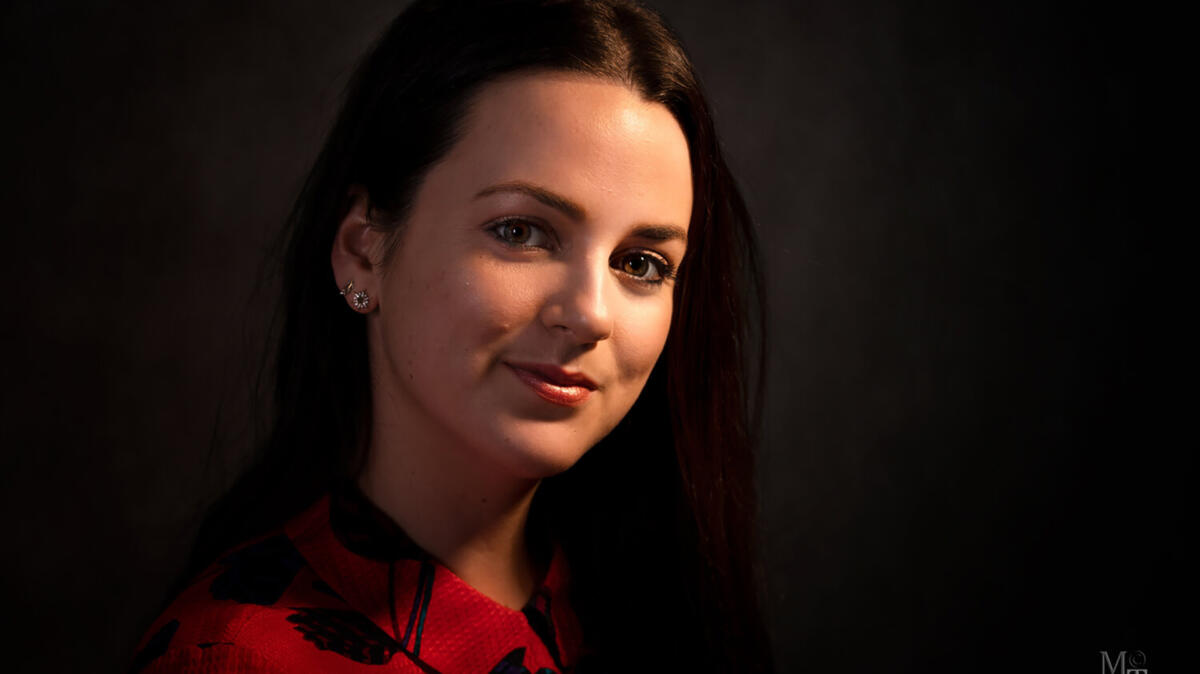
Merged between East and West: A discovery of influences throughout Unsuk Chin’s work, as explored through her Piano Étude No.5, ‘Toccata
The music presentation will investigate Korean composer, Unsuk Chin’s, unique fusion of sound influences, specifically in relation to her Piano Étude No.5, ‘Toccata’. Chin’s six piano études (1995-2003) are a significant contribution to the contemporary piano étude genre which follow the lineage of Chopin and Liszt. These études allow the composer to imaginatively showcase their compositional style while offering virtuosic opportunities for the performer. Originally envisioned as a twelve piano étude set, Chin’s six études provide an insight into Chin’s developing musical language and establishment as one of the most influential composers in the twenty-first century. Having studied with György Ligeti in Hamburg, Chin’s collection of piano études are successors to those by Ligeti, whose music had a significant impact on Chin’s own treatment of the genre.
The music presentation will place Chin’s piano étude within the wider context of her sound world. On a practical level the presentation will focus on Chin’s Piano Étude No.5 ‘Toccata’. While academic research has referenced influences present in Chin’s work, including Balinese Gamelan music and electronic music, few comparisons have been made in relation to such influences on Chin’s piano études. The presentation will explore how understanding Chin’s inspirations might enhance the interpretation of her études.
Through my own performance of the piece, I consider how Chin’s étude, which blends cultural influences from the East and West, adds to a pianist’s repertoire and enhances a pianist’s technique.
Biography
Dr Máire Carroll is a pianist, composer, collaborator and teacher who has performed throughout Europe, Asia, and North America including performances at Wigmore Hall, Carnegie Hall and the Liszt Academy in Budapest. Her acclaimed album Máire Carroll:The Complete Piano Études of Philip Glass was released on Delphian Records and was chosen by The Scotsman as one of the top five classical music records of 2024. Máire completed her Doctoral studies at Trinity College Dublin and RIAM, where her area of research focused on twentieth- and twenty-first-century piano études. This has led to the development of her Étude Extravaganza recital programme, featuring several Irish premiere étude performances by female composers including Hélène de Montgeroult and Unsuk Chin.
Liubov Ulybysheva
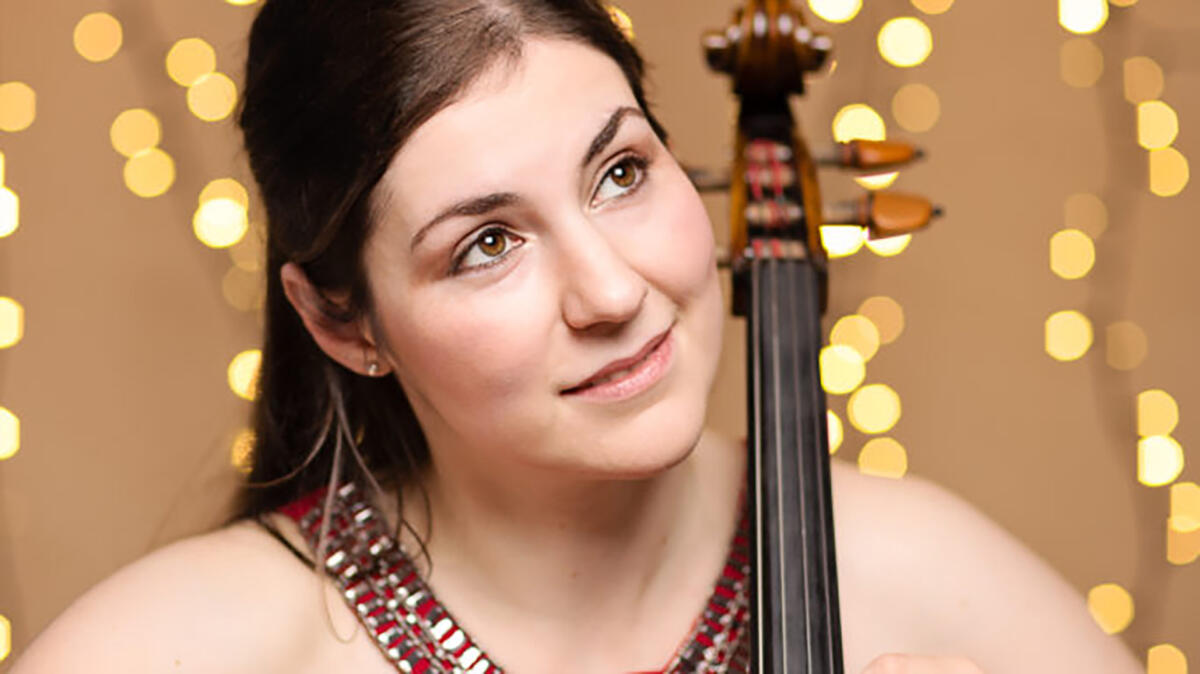
Mieczyslaw Weinberg Sonata for cello solo No.4, Op.140: editorial challenges and possibilities
Mieczyslaw Weinberg is one of the most prolific composers of the 20th century, his output including 26 symphonies, 17 quartets, many instrumental concertos, vocal music, and also music for theatre, films and circus. However, it is the wealth and quality of his cello music that has drawn me to this composer. He wrote 6 cello sonatas, 24 Preludes (with piano and for solo cello), concertos and a Fantasy for cello and orchestra. Whilst some of these pieces are starting to be performed more often, the majority is still largely unknown to concert-goers. My PhD project aims to develop editions and performances of Weinberg’s cello music in order to address the unjust neglect of his music.
My lecture-recital will explore Weinberg’s sonata for cello solo No.4, Op.140, which is almost never played in either its initial version or in the second extended version, written in 1986 as Op.140bis. There is to my knowledge only a single-posthumous-recording, by Josef Feigelson (November 1997). Once I started learning the sonata it became clear that one of the main barriers to this piece becoming part of the repertoire was the dearth of historical and social background information and the absence of the kind of detailed technical strategies (fingerings, bowings) provided for the sonata. In addition to the lack of fingerings, the dynamic indications throughout the sonata are very sparse, leaving a great deal in the hands of the performer. What value can be added to a score like this by a performer with wide experience of the contextual repertoire and a detailed knowledge of Weinberg’s practice?
I will explore what might constitute a “useful edition” from a performer’s point of view and why there is a need for a new critical edition of Weinberg’s Op.140. I will also touch on the topic of the inspiration and influence of Weinberg’s contemporaries behind this piece, in particular its dedicatee, the founder of the famous Borodin Quartet, Valentin Berlinsky, whose connection with Weinberg plays an important role also.
Biography
Liubov Ulybysheva is a Russian-born British cellist who enjoys a versatile career as a soloist and chamber musician alongside teaching and coaching. She has performed live on BBC Radio 3, BBC Radio Ulster and Classic FM. In 2018 Liubov joined the Royal Opera House orchestra and in the same year released her debut recording featuring works by British Composers. In 2019, Liubov became an artistic manager of the Brundibar Arts Festival which aims to bring music written during the Holocaust to the general public. She was very honoured to be awarded the Associate of the Royal Academy of Music in 2020. The following year Liubov started her PhD project on Mieczyslaw Weinberg’s cello music at the Royal Academy of Music.
Sebastian Silén and Satu Elijärvi
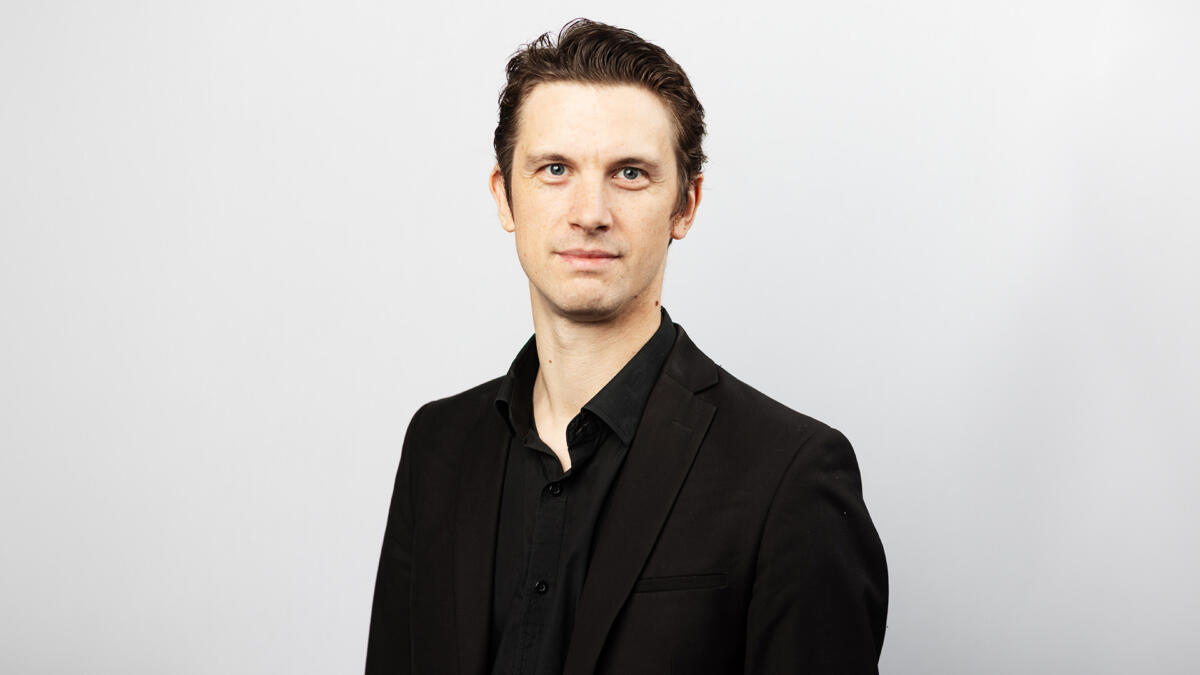
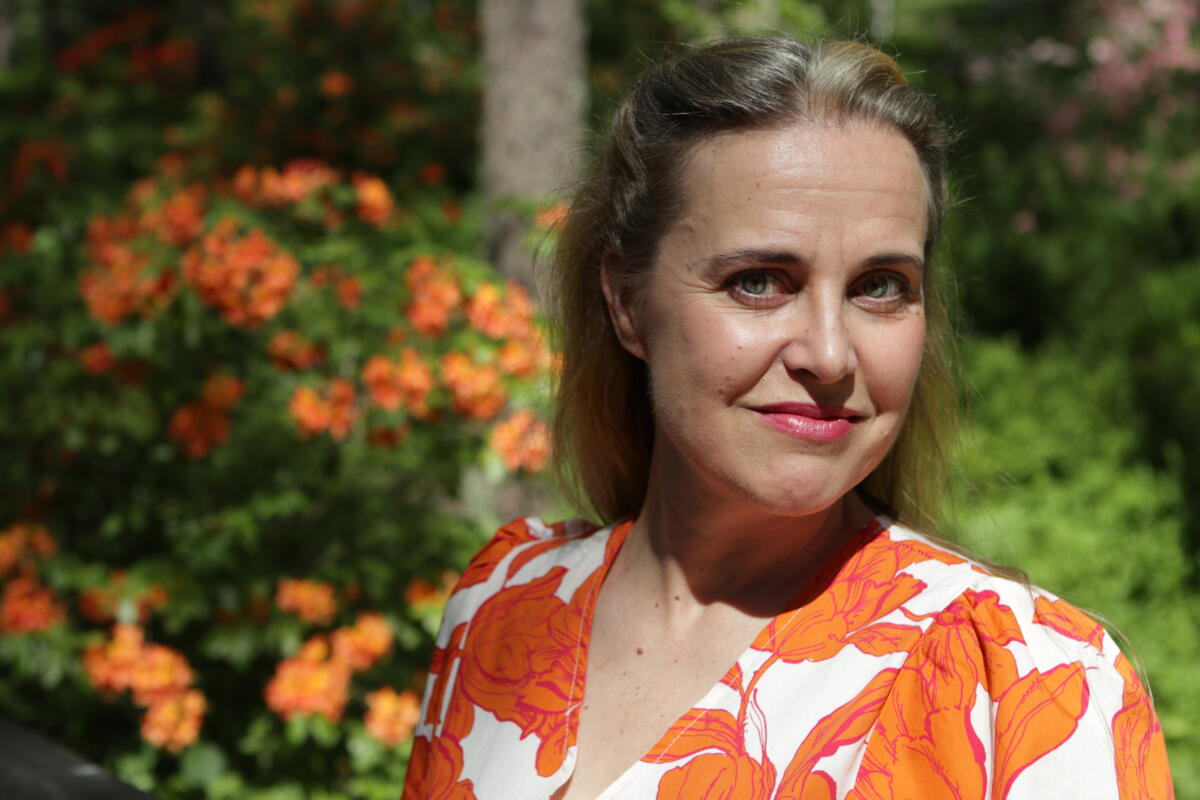
Sibelius and the Nordic Musical Landscape: Folk Elements, Modal Harmony, and the Evocation of Natu
This lecture recital explores how a Nordic perspective can inform our understanding of Jean Sibelius’s works for violin and piano. The presentation will give an overview of musical characteristics which have been commonly associated with Nordic music and highlight how they manifest in the music of Sibelius. The presentation investigates how elements such as folk music influences, static textures, and modal harmonies can be used to shape our interpretational choices.
The music which is performed during the lecture recital spans Sibelius’s whole career, from early works which remained unpublished during Sibelius’s lifetime to his very last opus. These examples suggest that musical elements commonly associated with Nordic music were a persistent feature of Sibelius’s tonal language. Rather than offering definite answers, the awareness of these elements may suggest interpretative possibilities and can be used to deepen our appreciation of Sibelius’s artistic voice.
Performed repertoire:
- Jean Sibelius: Sonata for Violin and Piano in F Major, JS 178, 2. Andante
- Jean Sibelius: Danses champêtres No. 5, Op. 106
- Jean Sibelius: Scène de danse, Op. 116
- Jean Sibelius: Auf der Heide, Op. 115, No. 1
- Jean Sibelius: Impromptu Op. 78, No. 1
- Jean Sibelius: Berceuse Op. 79, No. 6
Biographies
Violinist and artistic researcher Sebastian Silén is a doctoral student at the Sibelius Academy of the University of the Arts Helsinki. His artistic doctoral research explores the Nordic musical context surrounding Jean Sibelius’s works for violin and piano. He has published peer-reviewed articles, served as the editor of a critical collected edition of Robert Kajanus’s violin music (published by Fennica Gehrman), and has presented at numerous academic conferences. As a violinist, Silén has performed with several of Finland’s leading orchestras and has won prizes in both national and international competitions. In recent years, his artistic focus has been on rarely performed music from the Nordic countries.
Pianist, performer and teacher Satu Elijärvi’s career includes a longstanding professional collaboration with the Finnish National Opera and Ballet (FNOB) as a soloist, as a chamber musician, as a ballet pianist, and as a principal keyboardist in over 120 opera, concert and ballet productions. As a PhD researcher at the University of the Arts Helsinki, her artistic doctoral research explores pianistic declamation, a performance and practice philosophy of the 19th century context and Franz Liszt. Declamative practice is conceptualized both in relation to the performance practice, and to the articulation of the music’s underlying structural processes and expressive meaning, as a mode of thought that engages the corporeal, performative and the inherently pianistic.